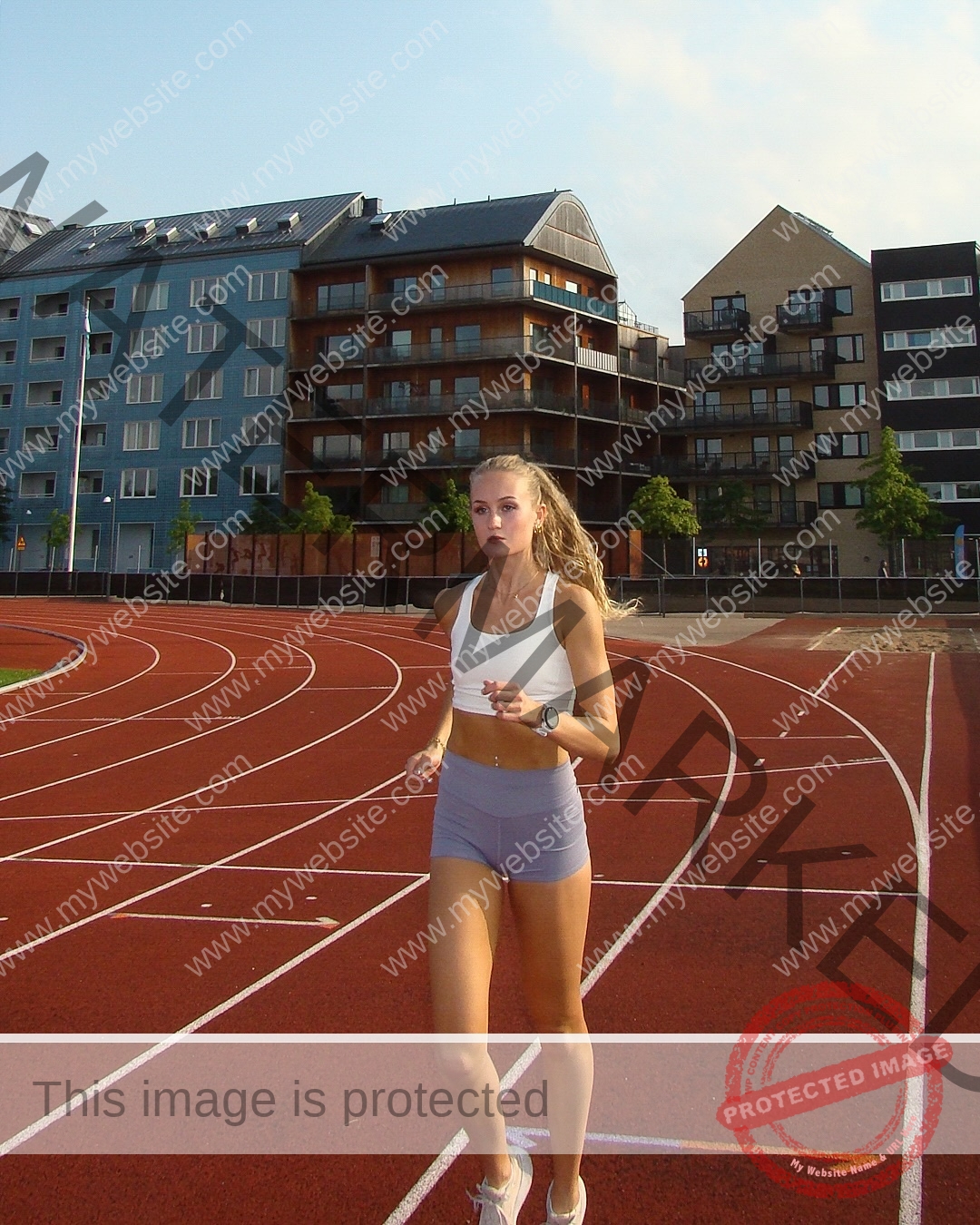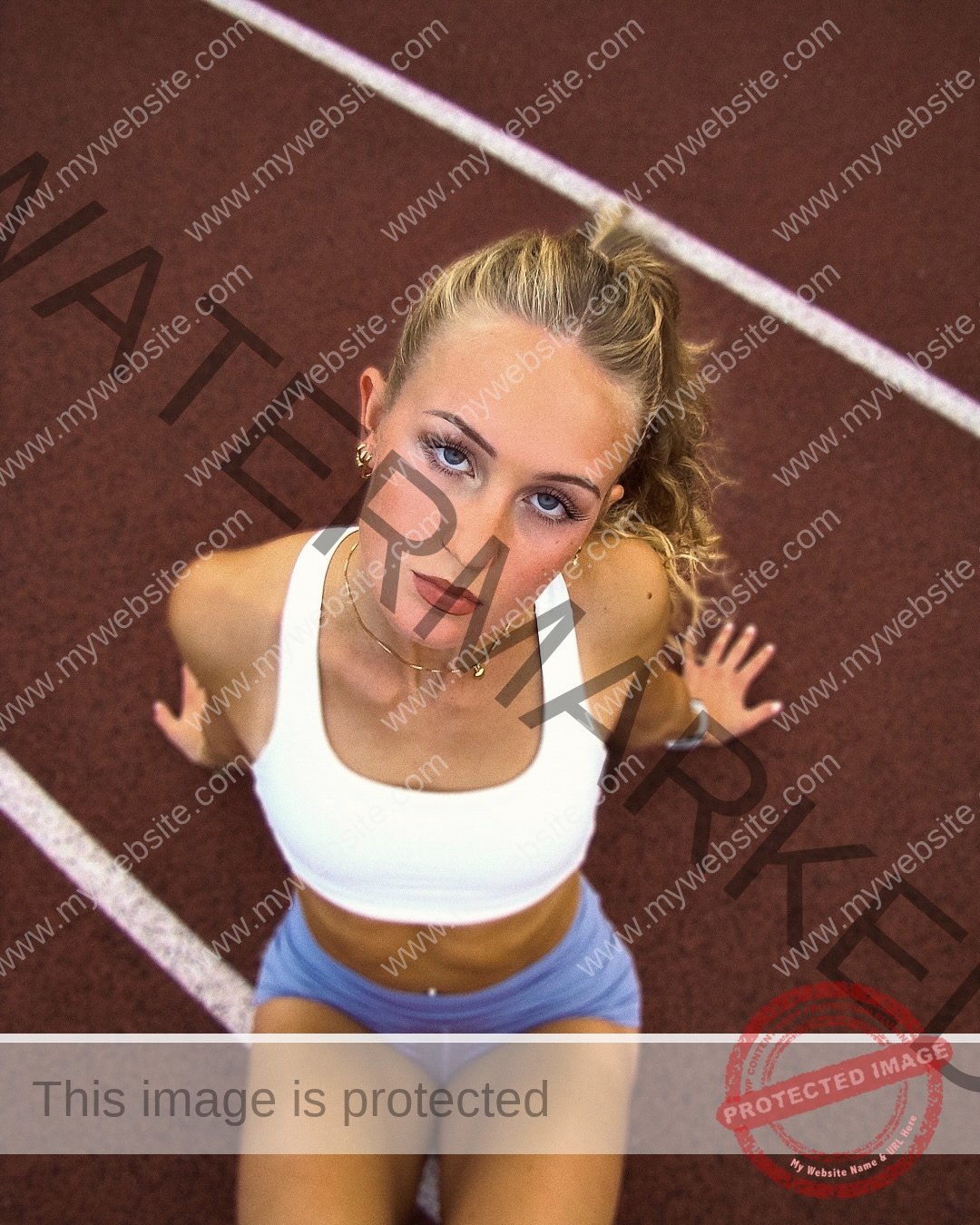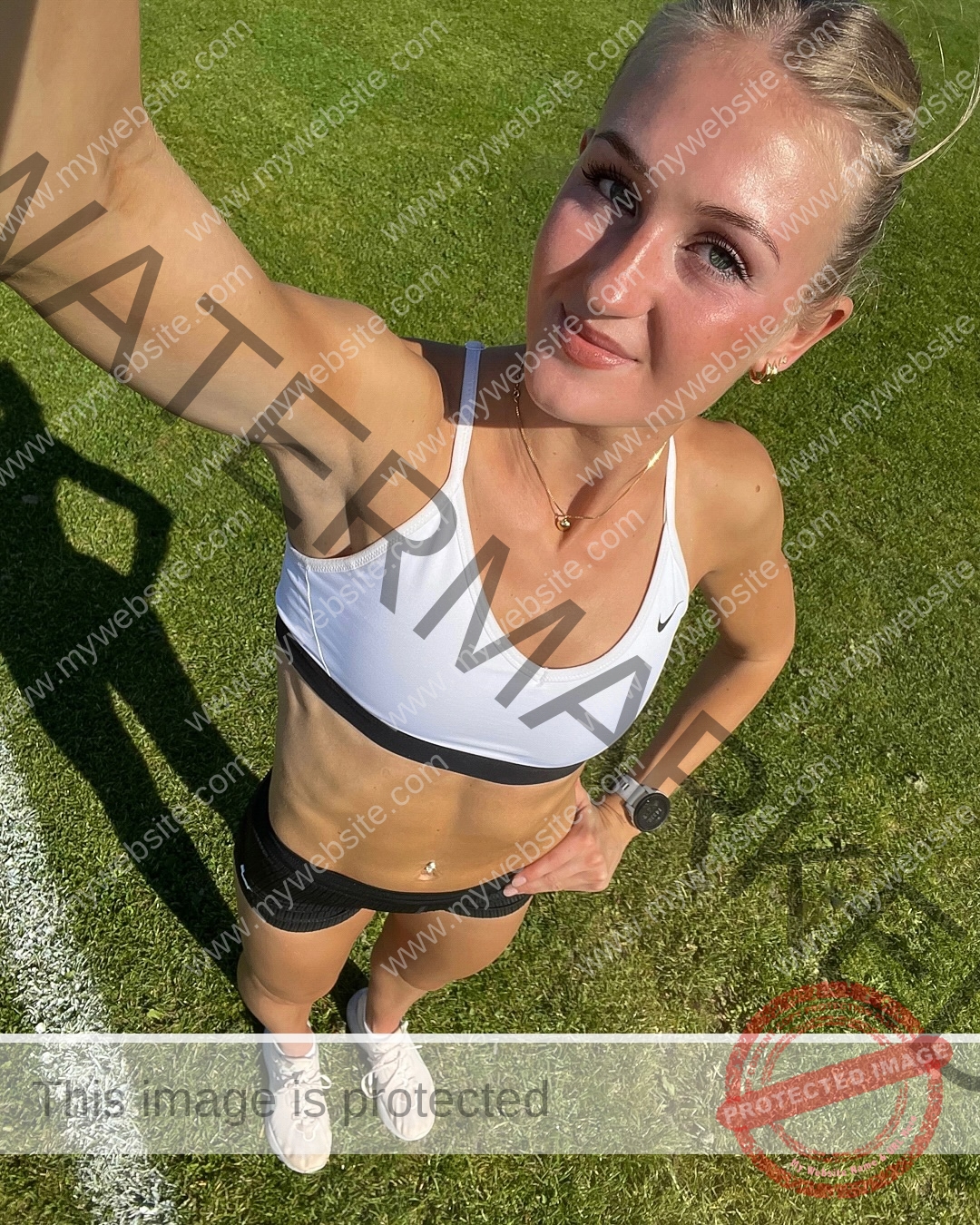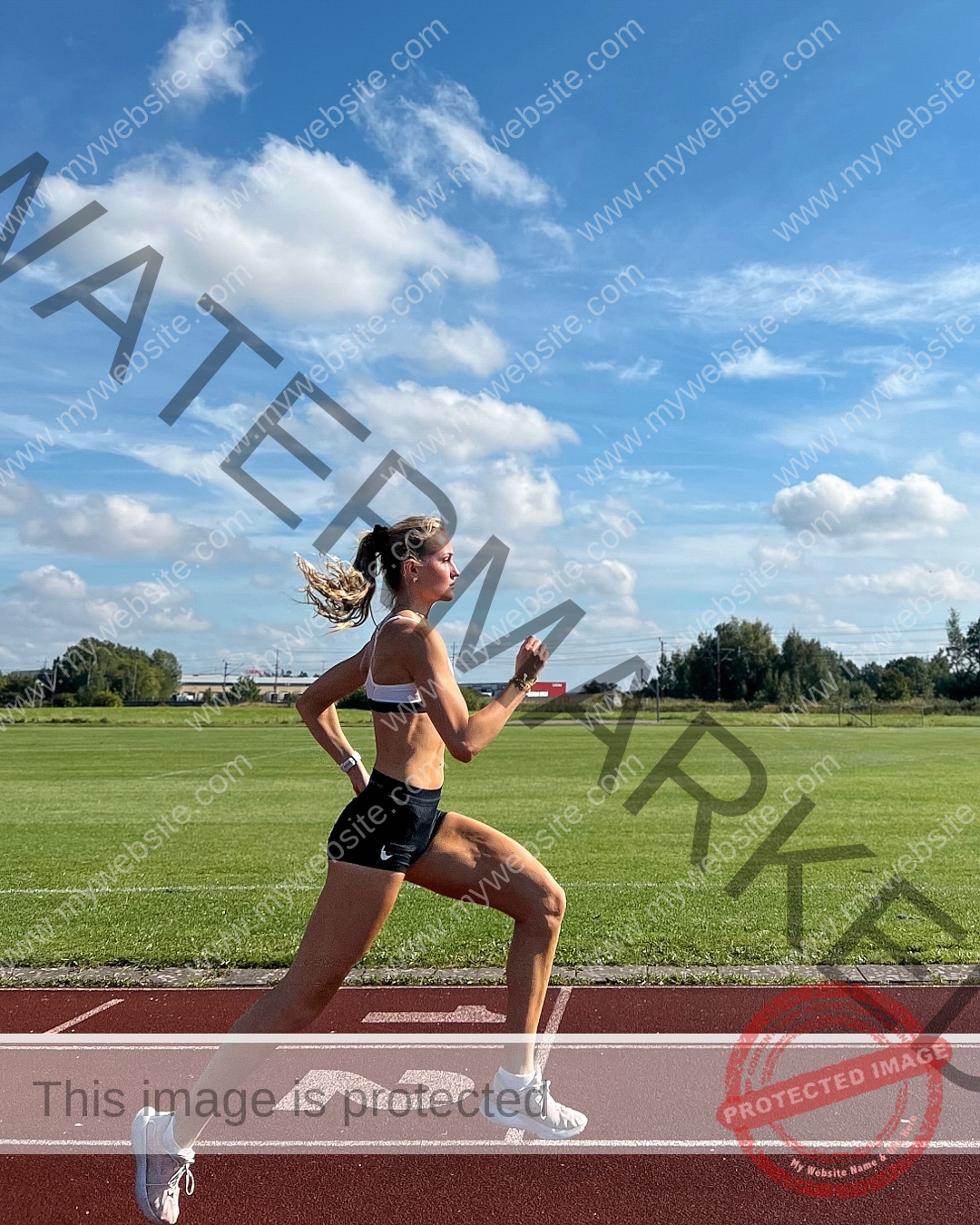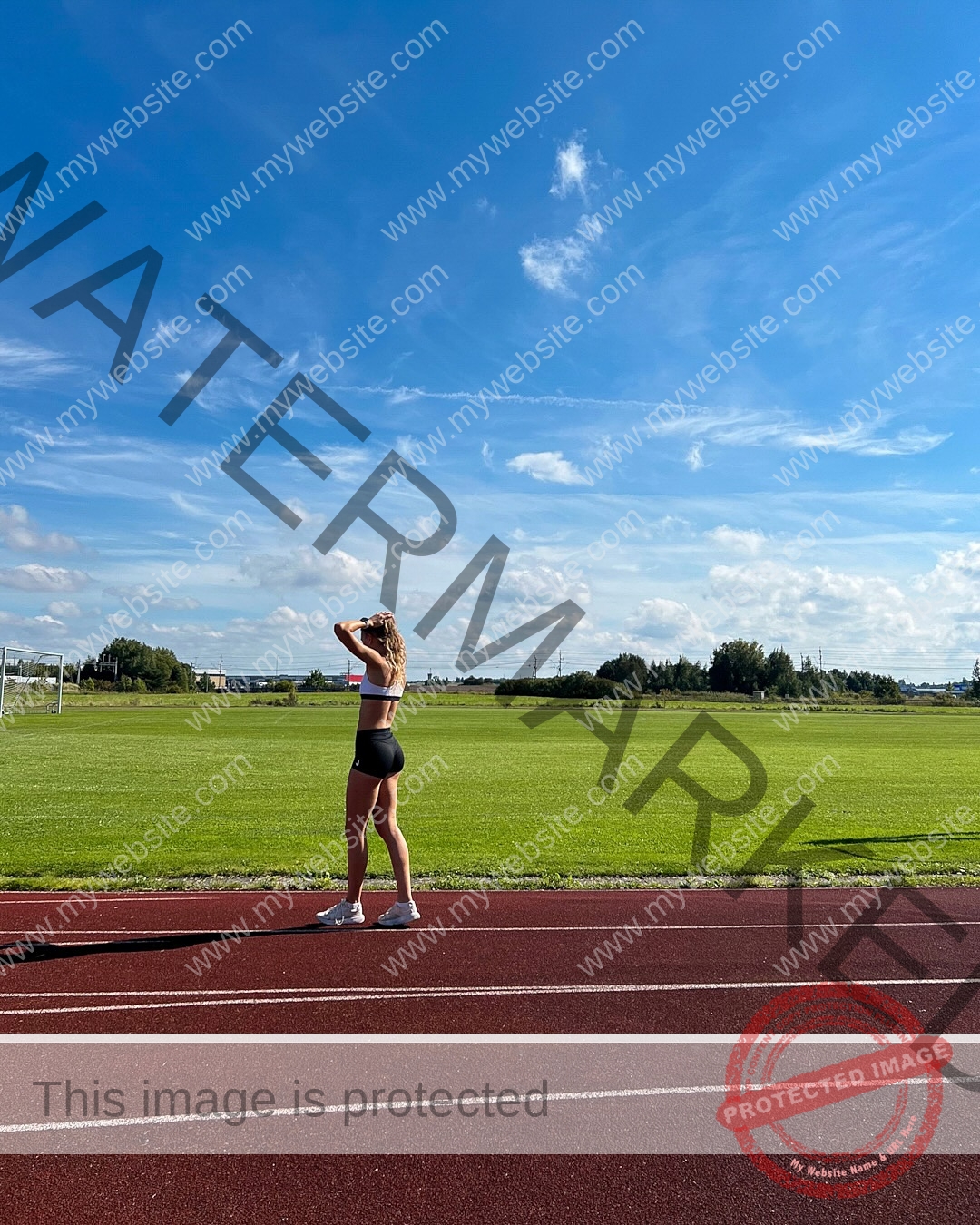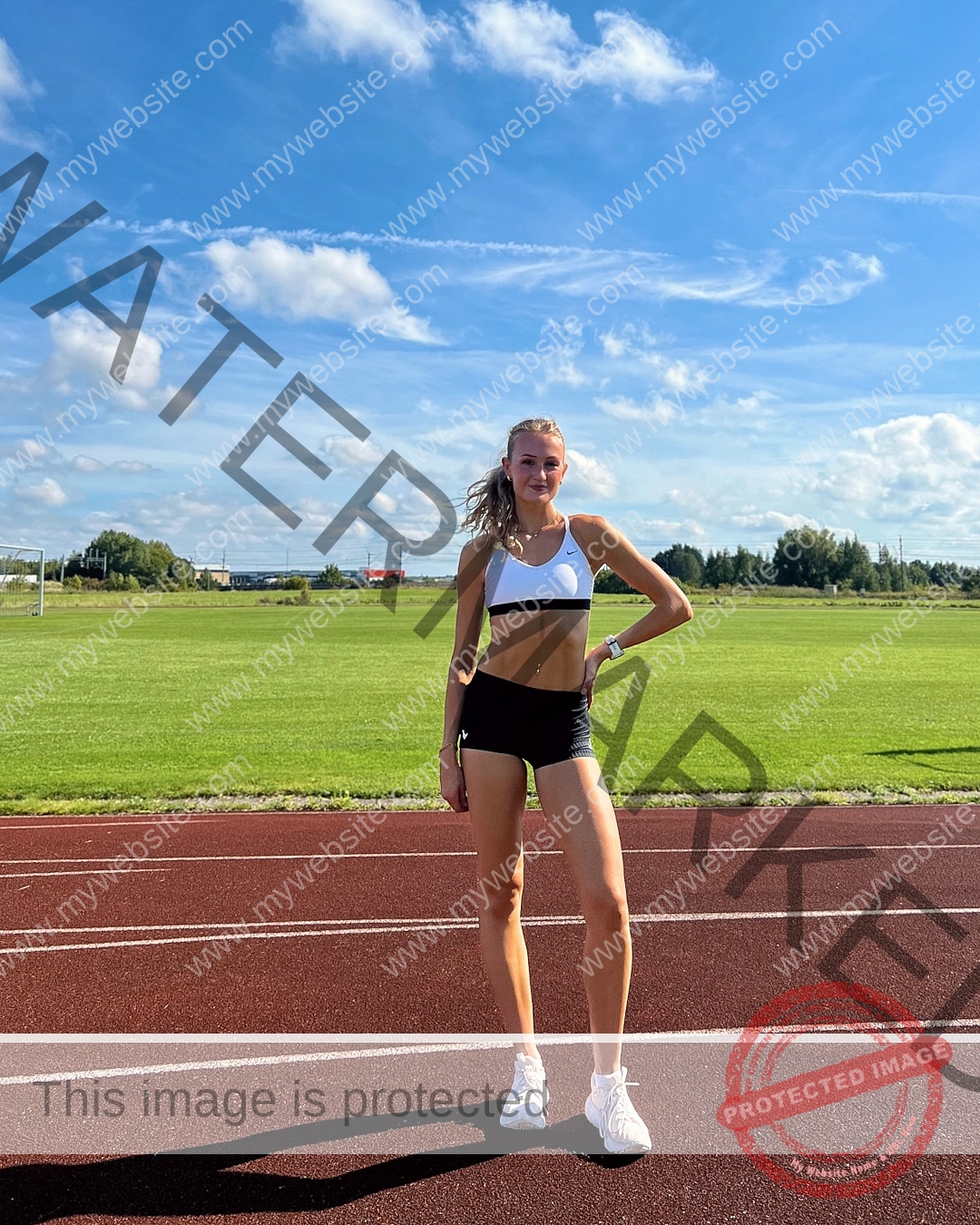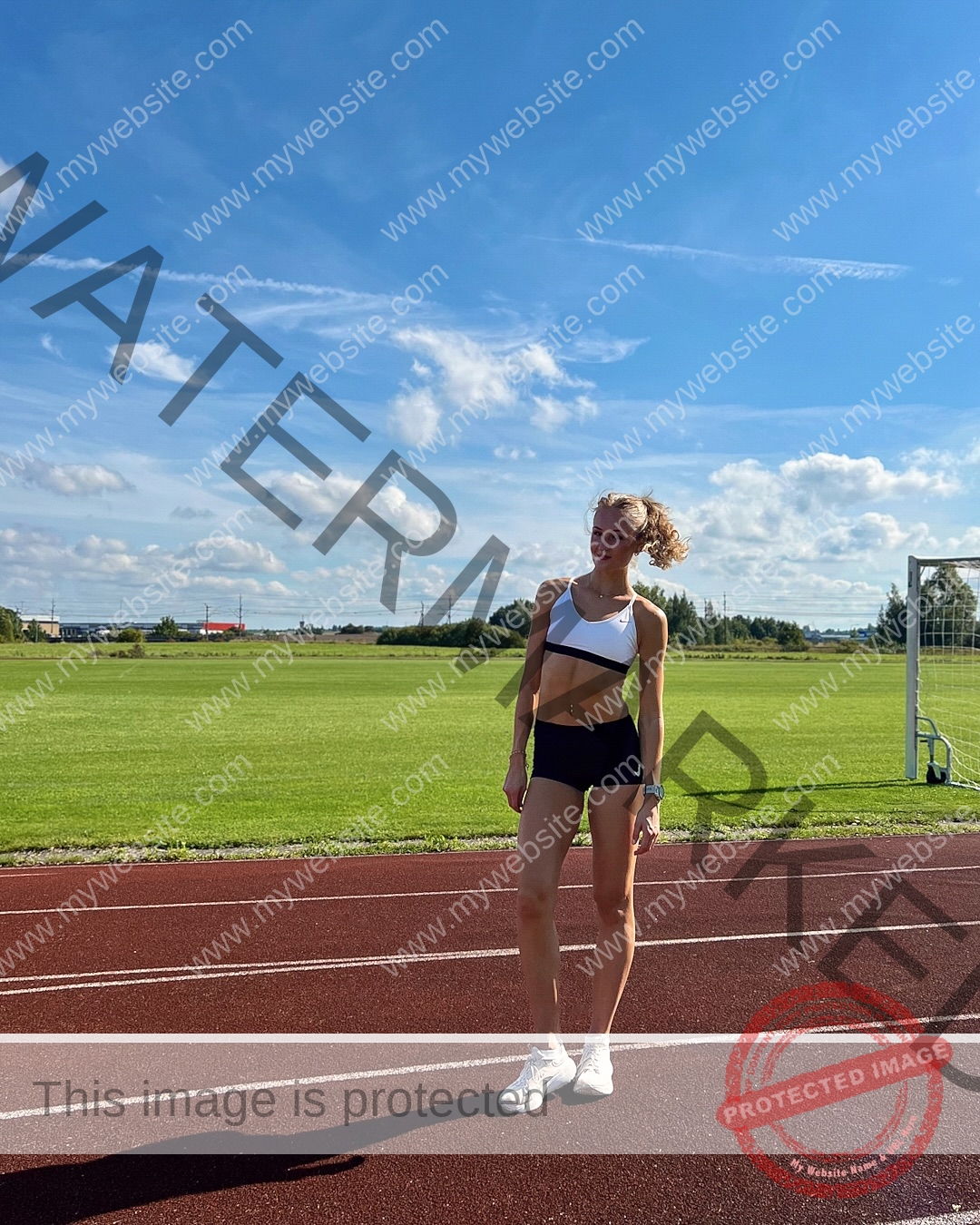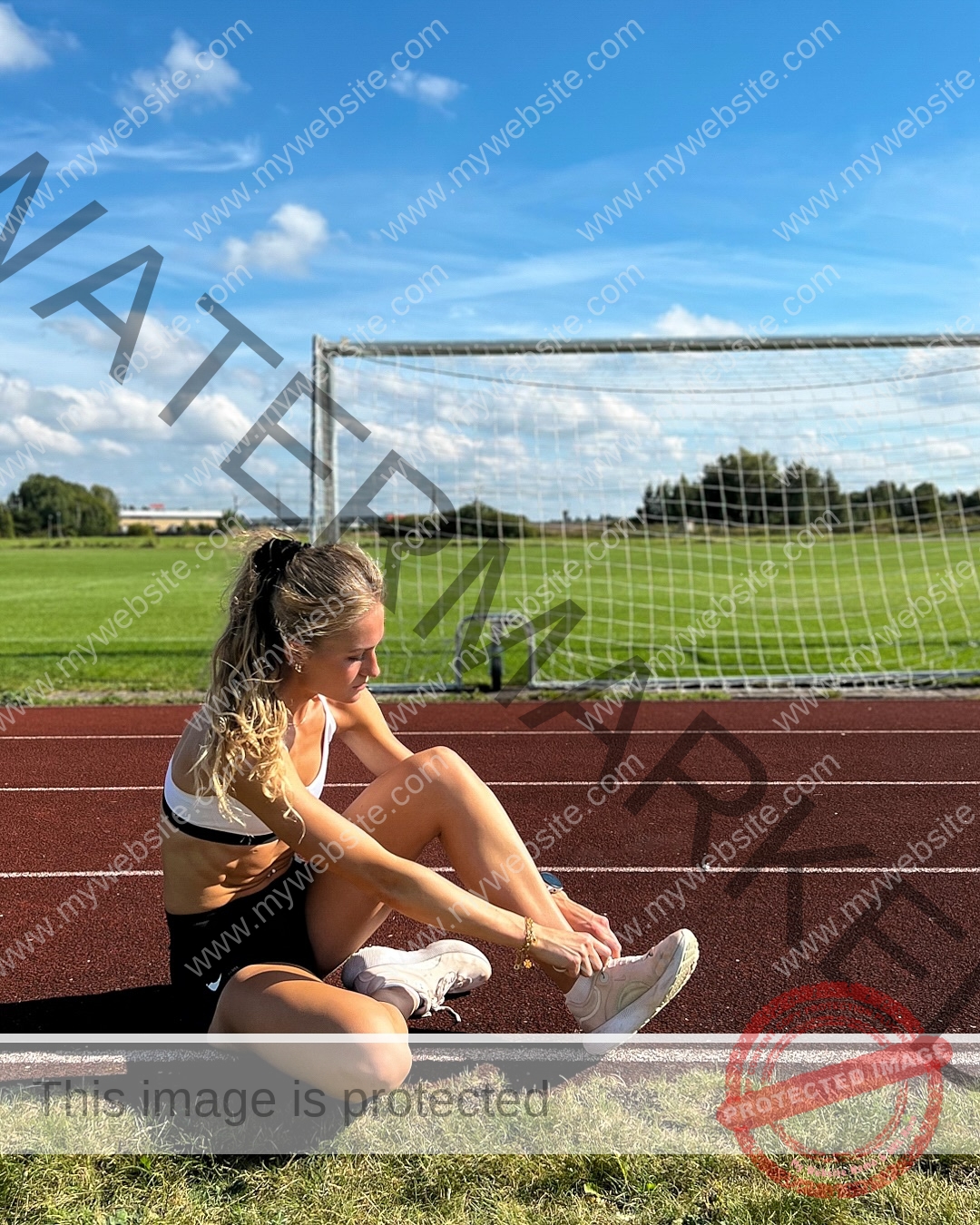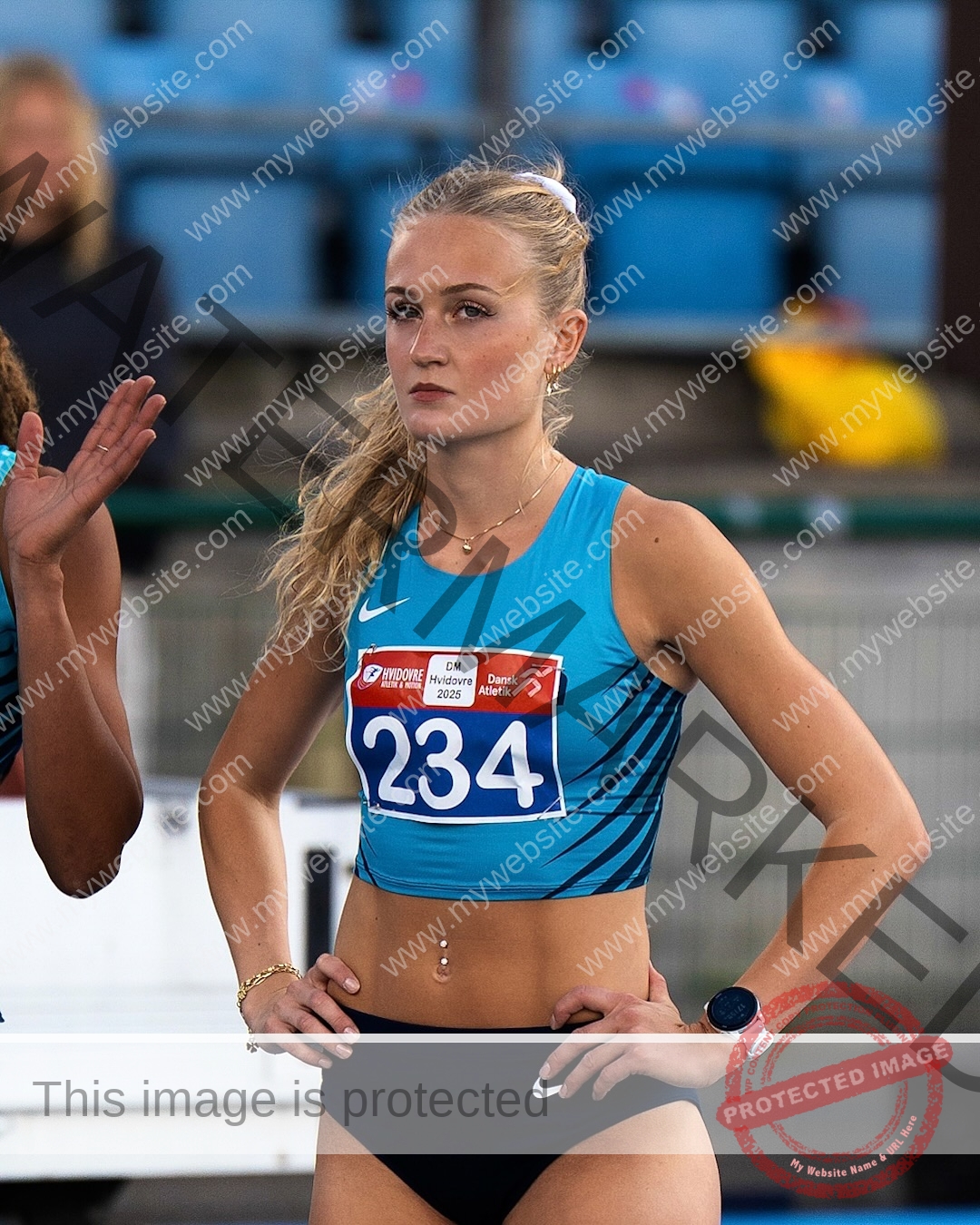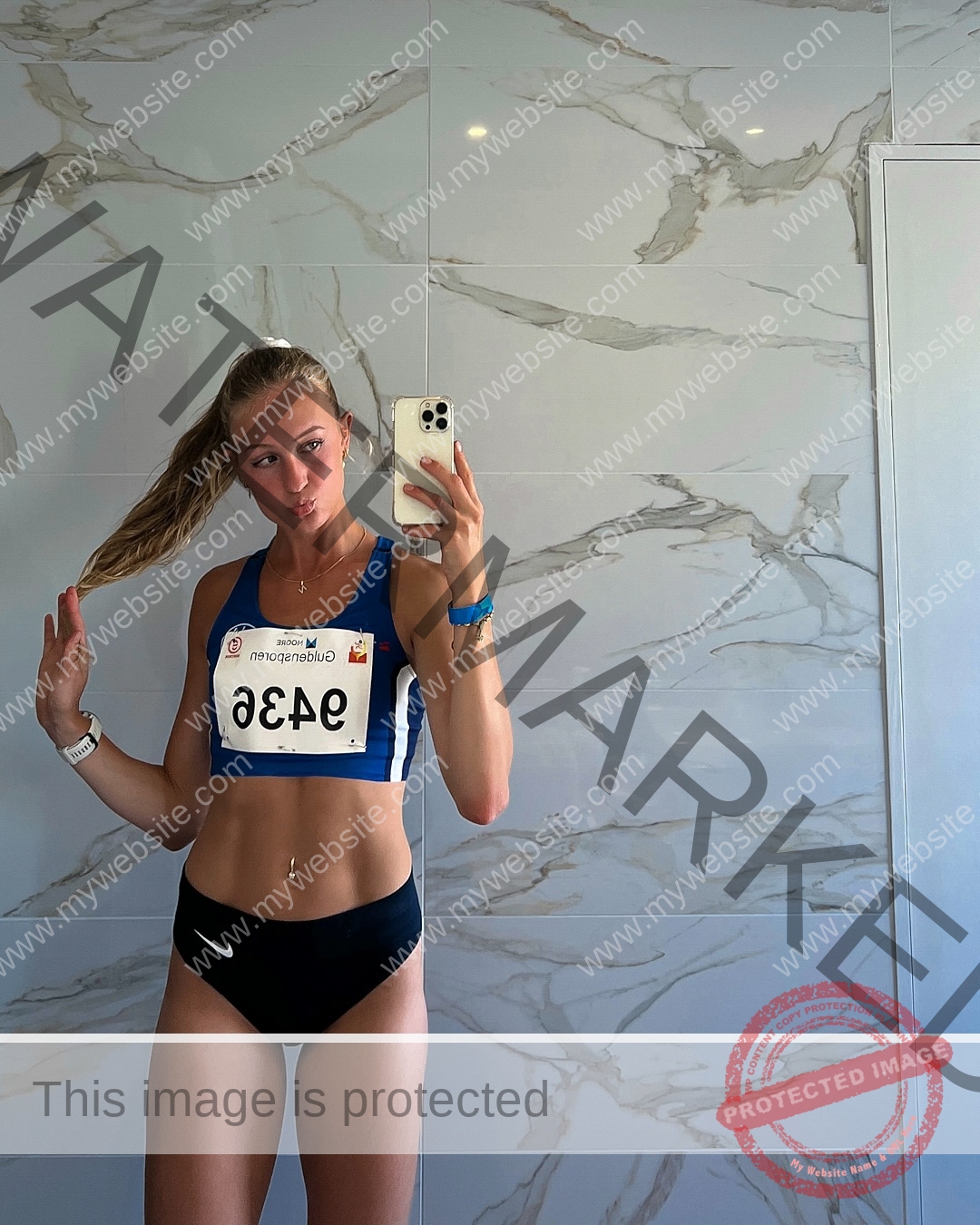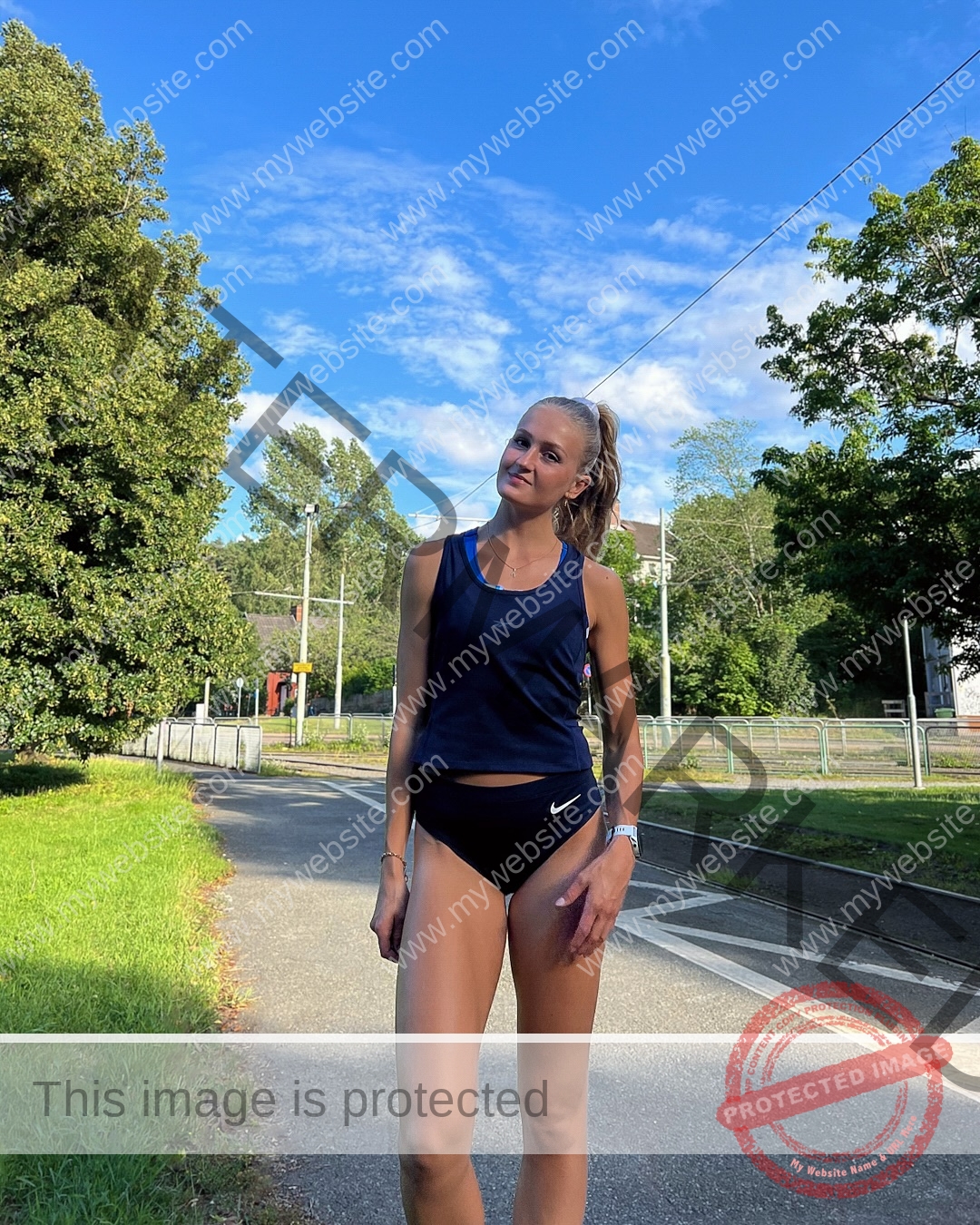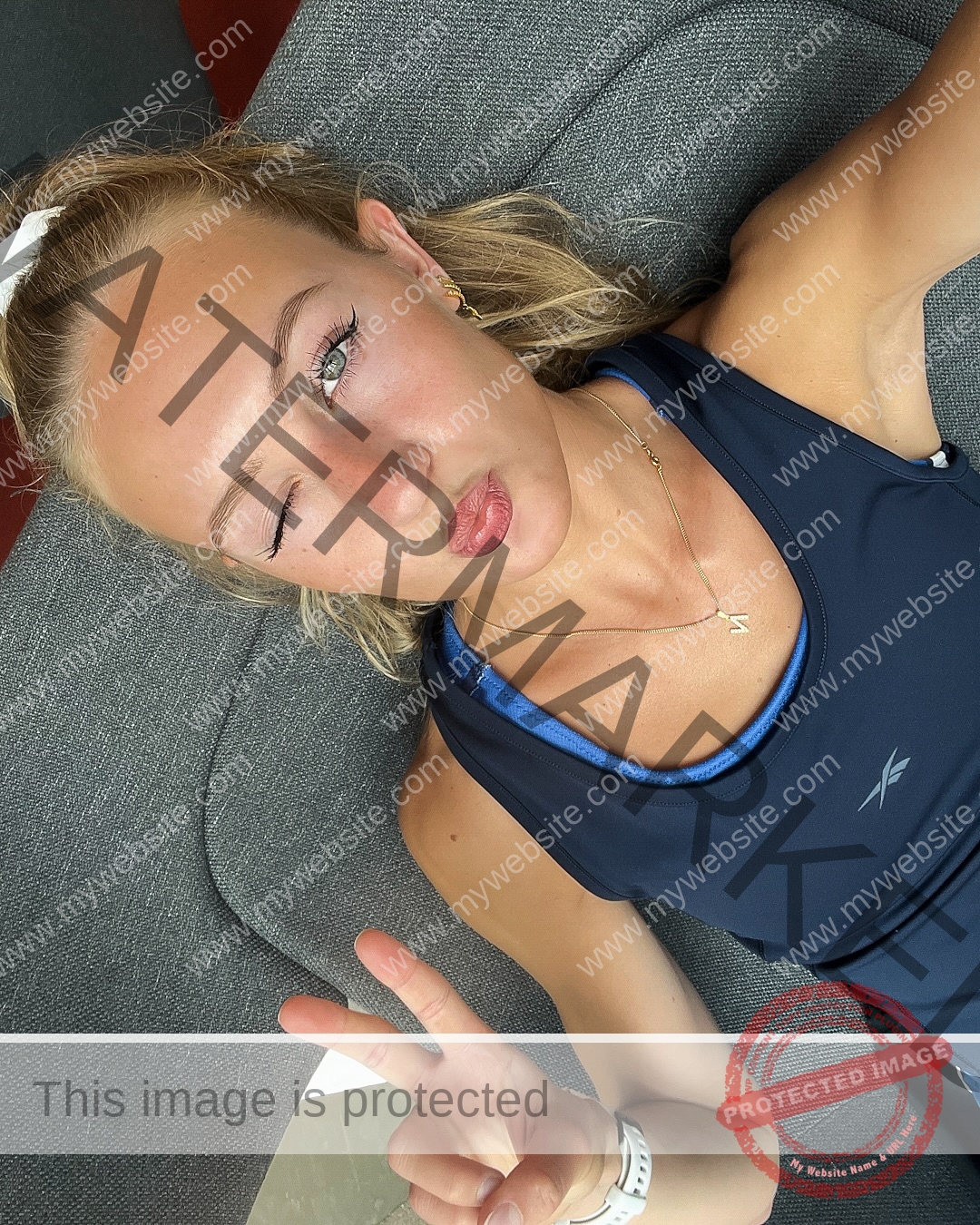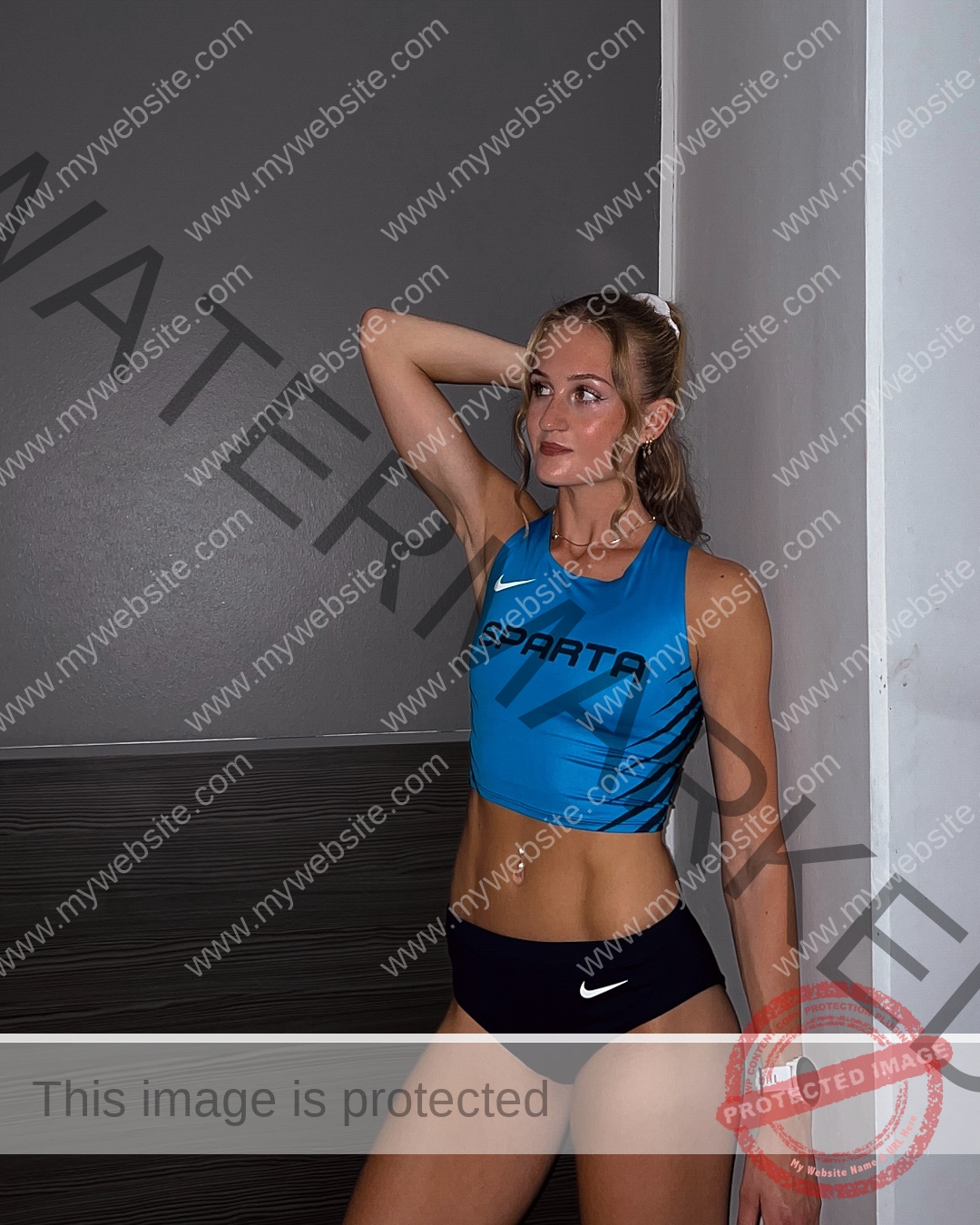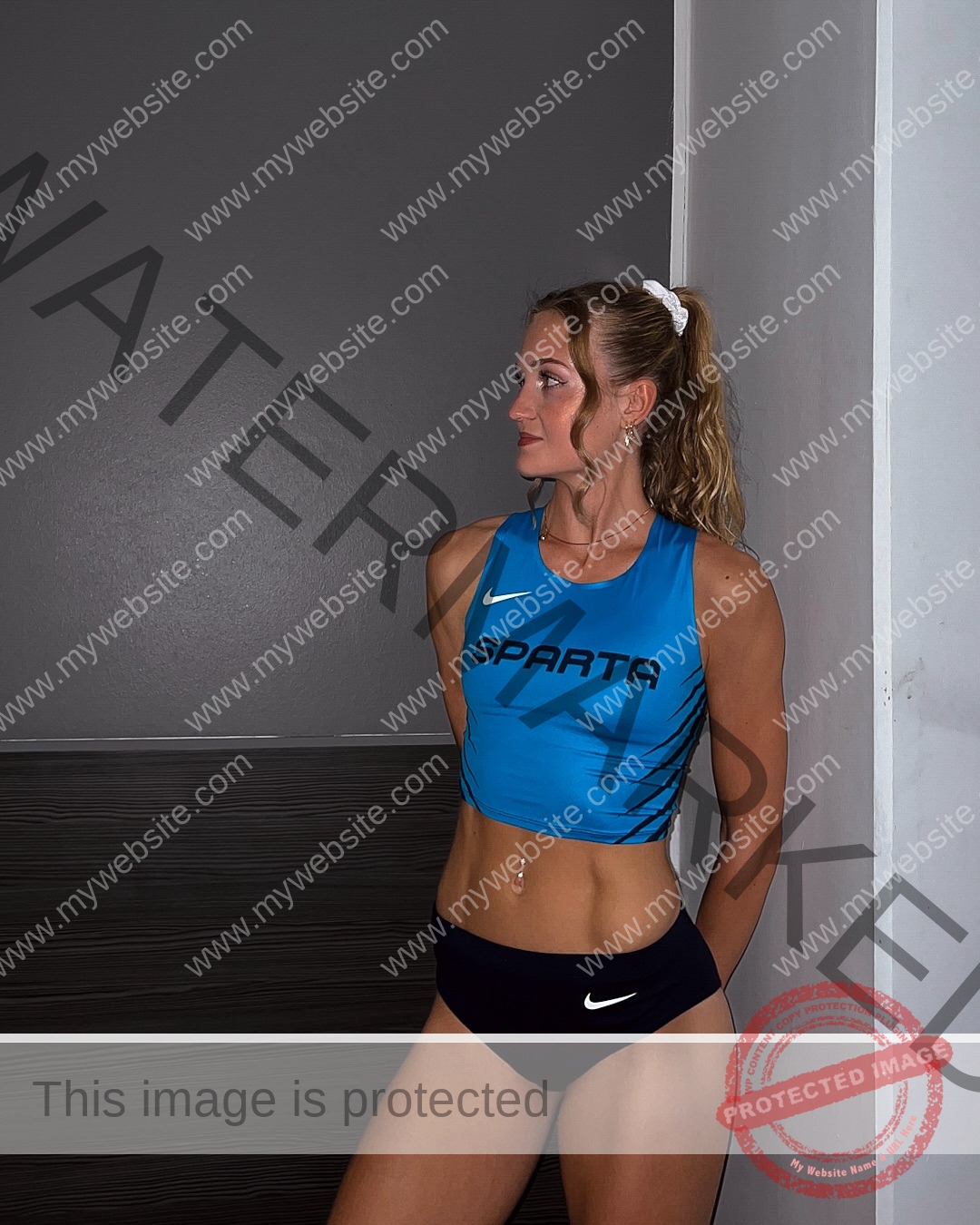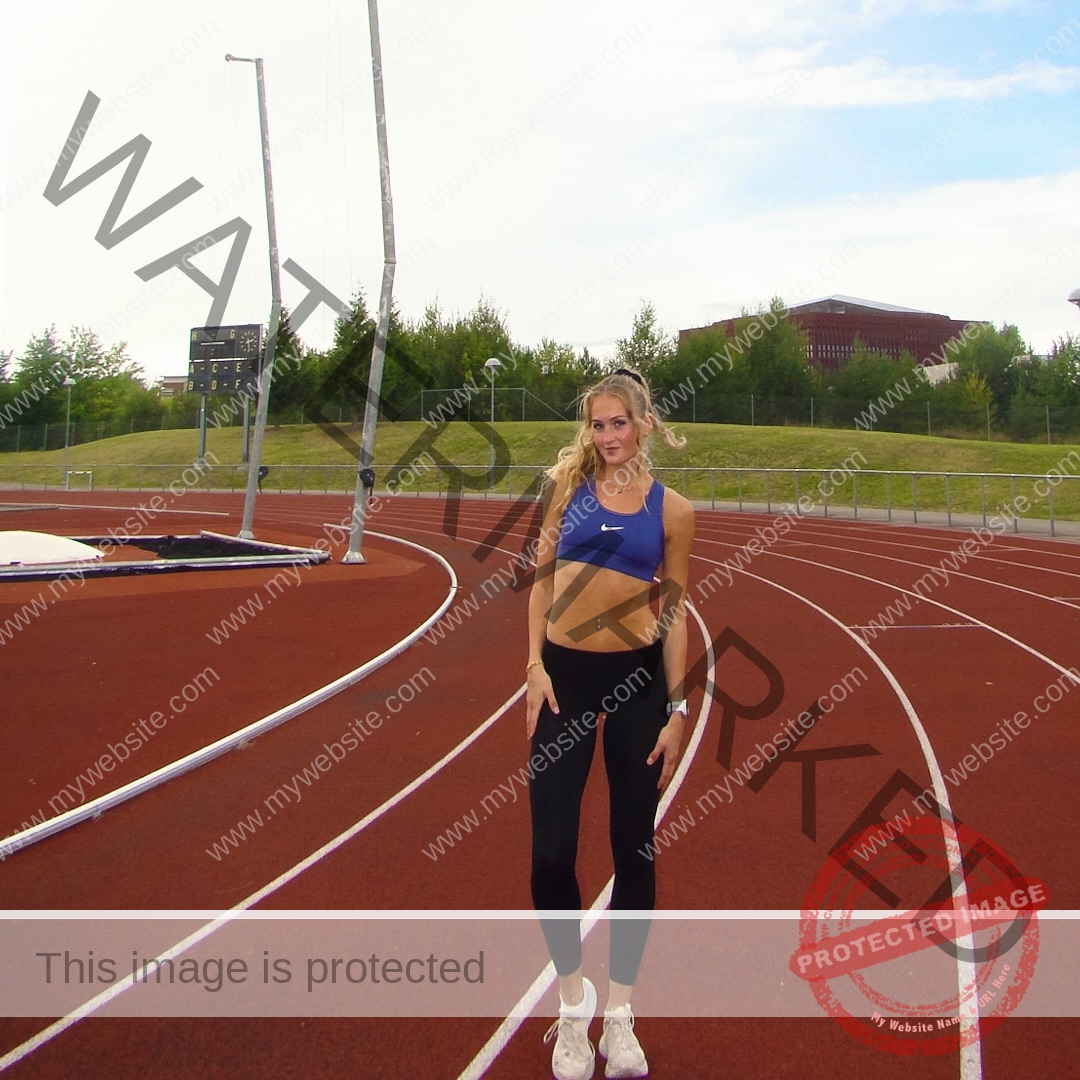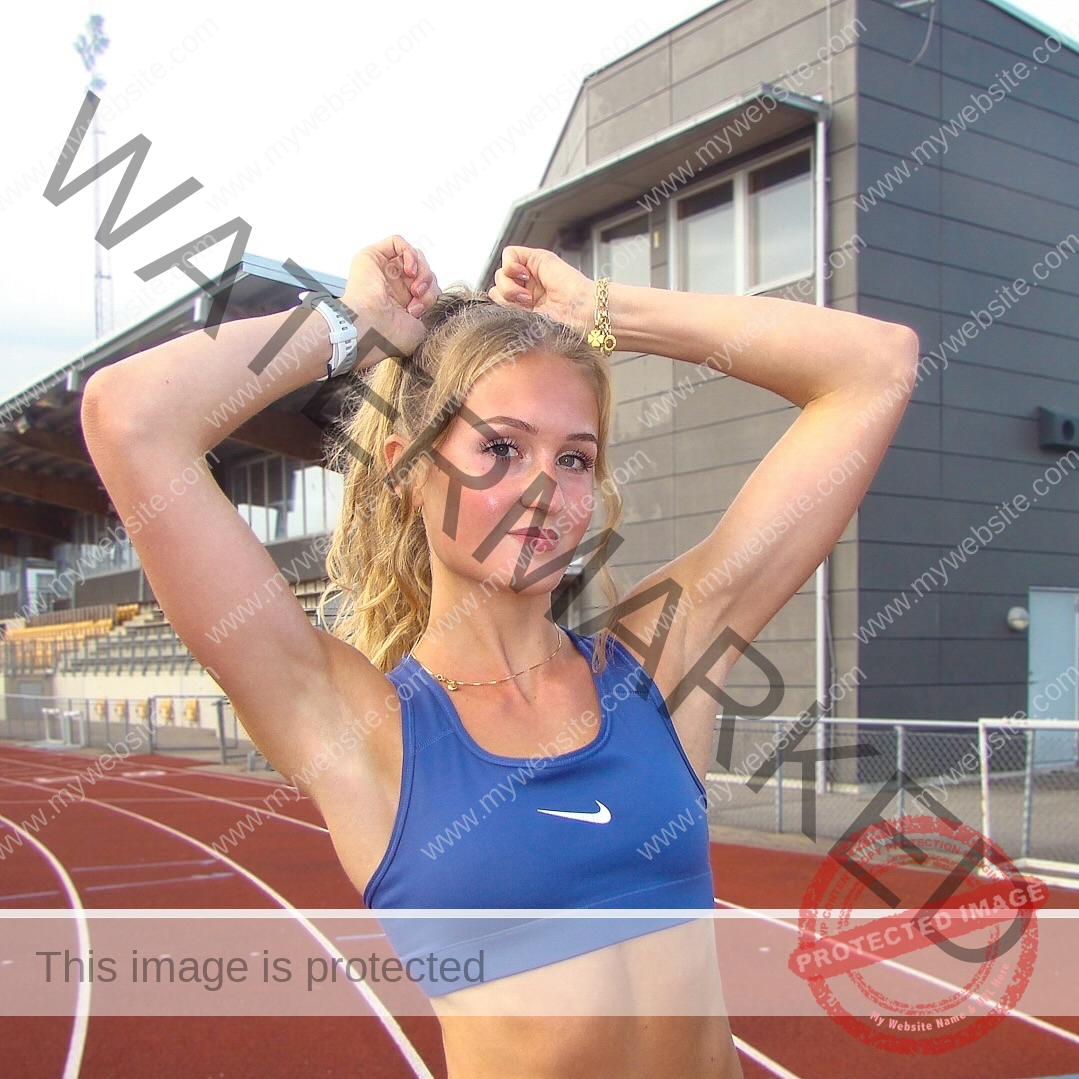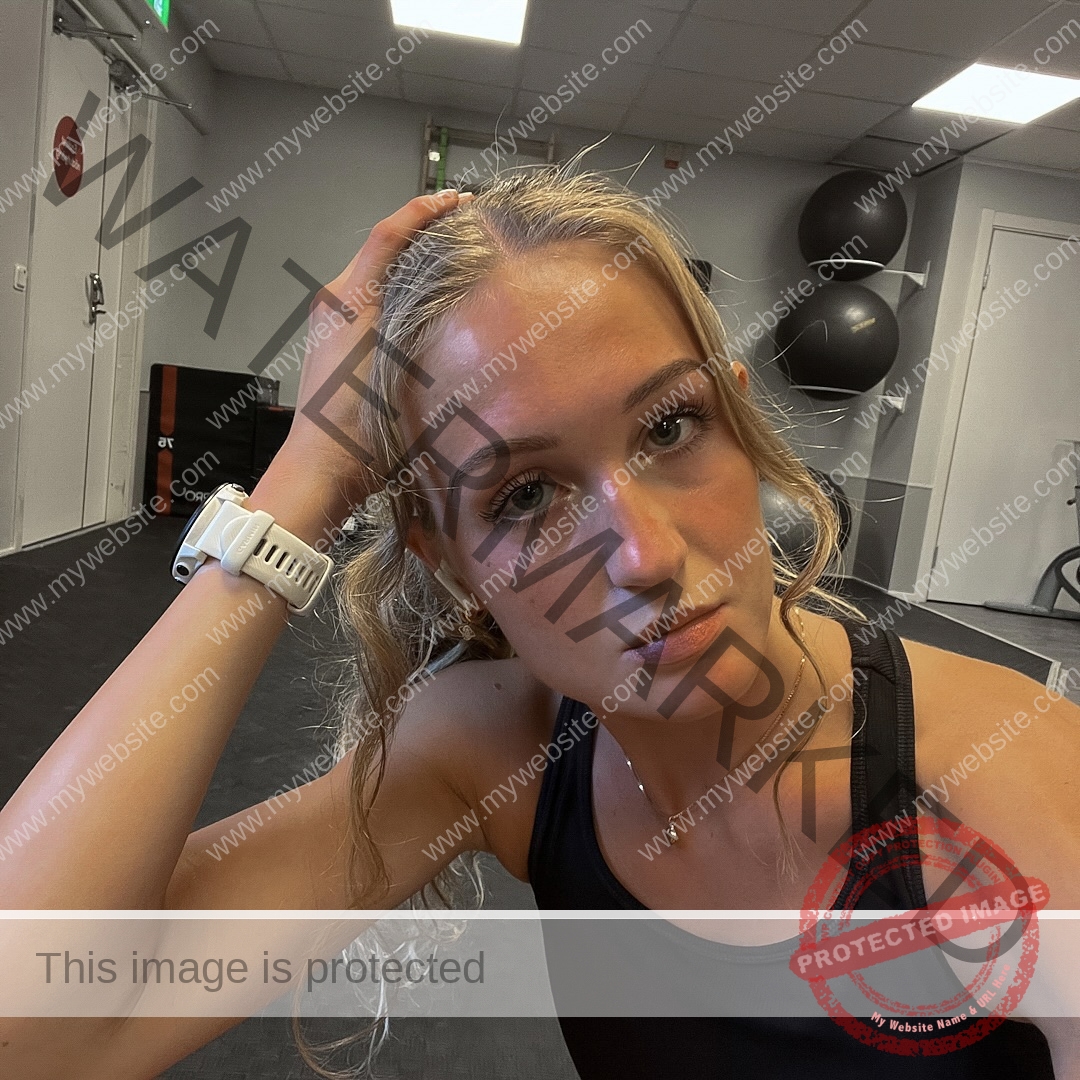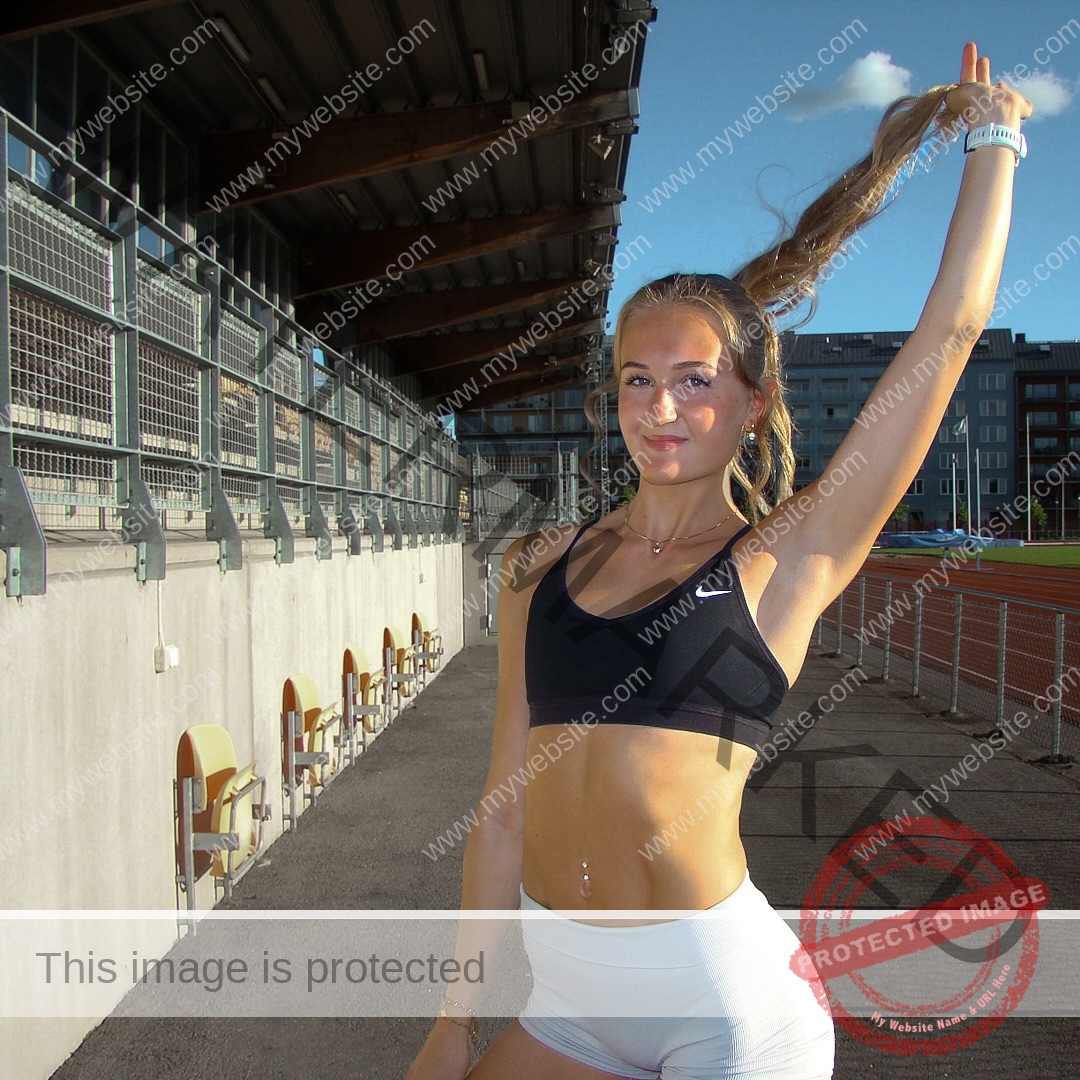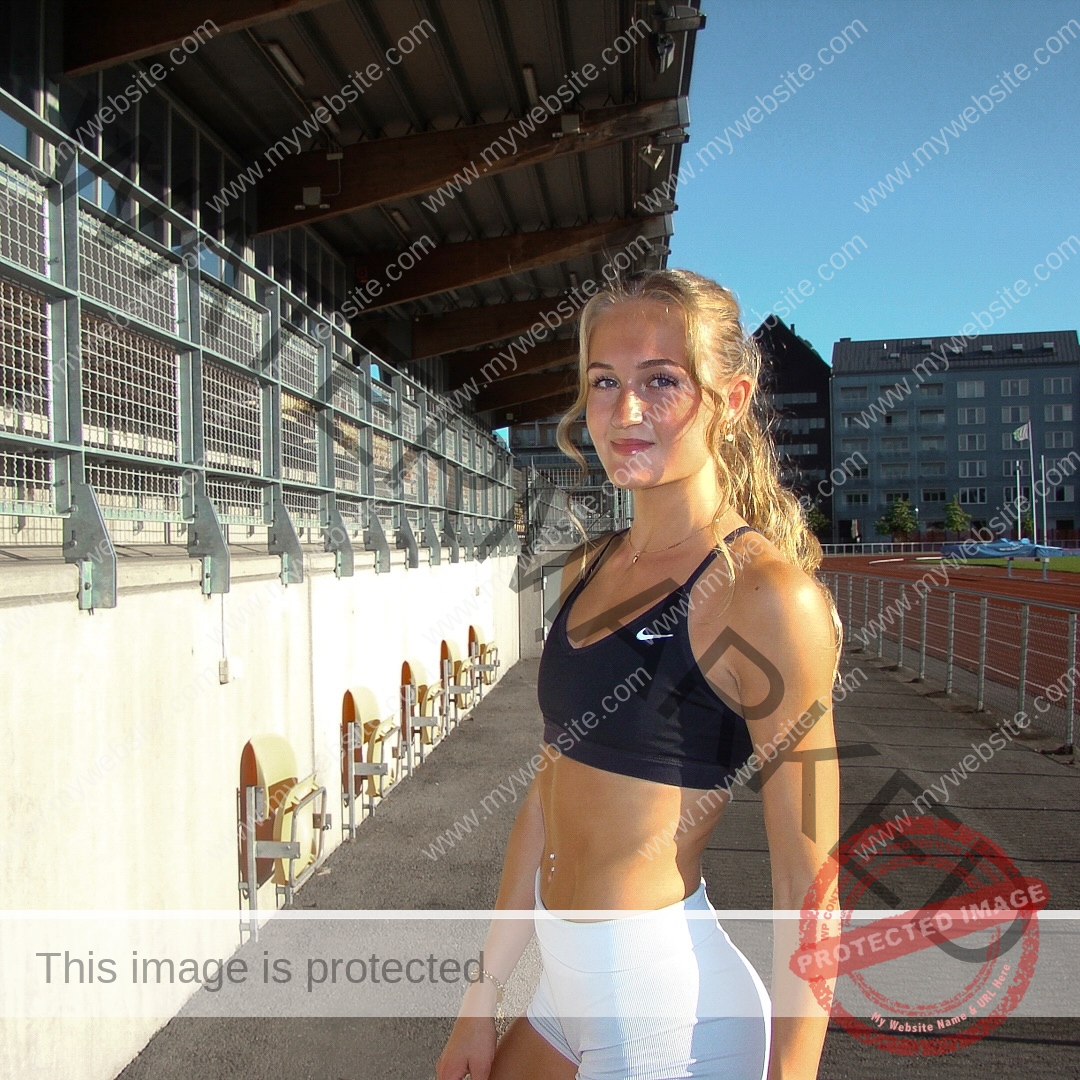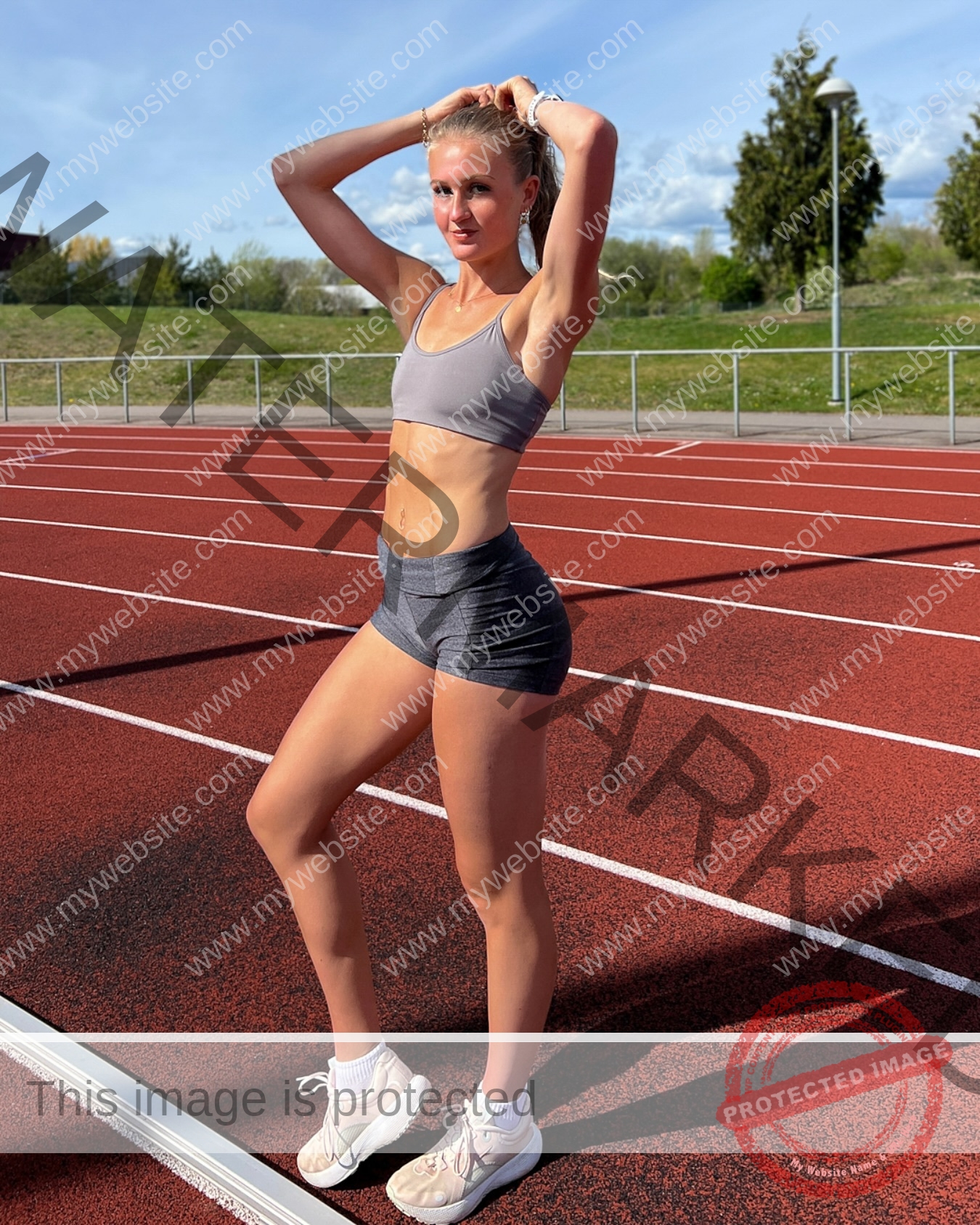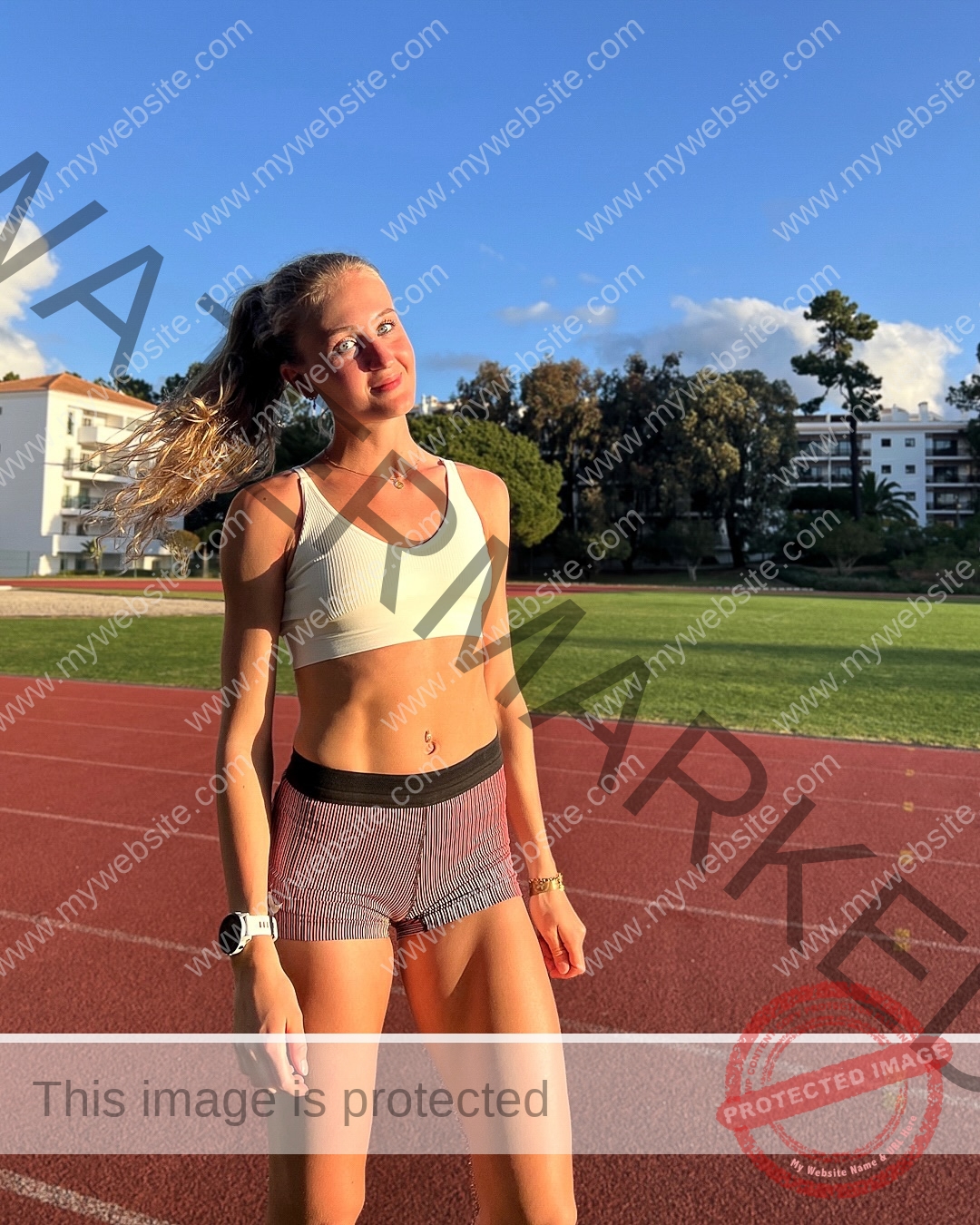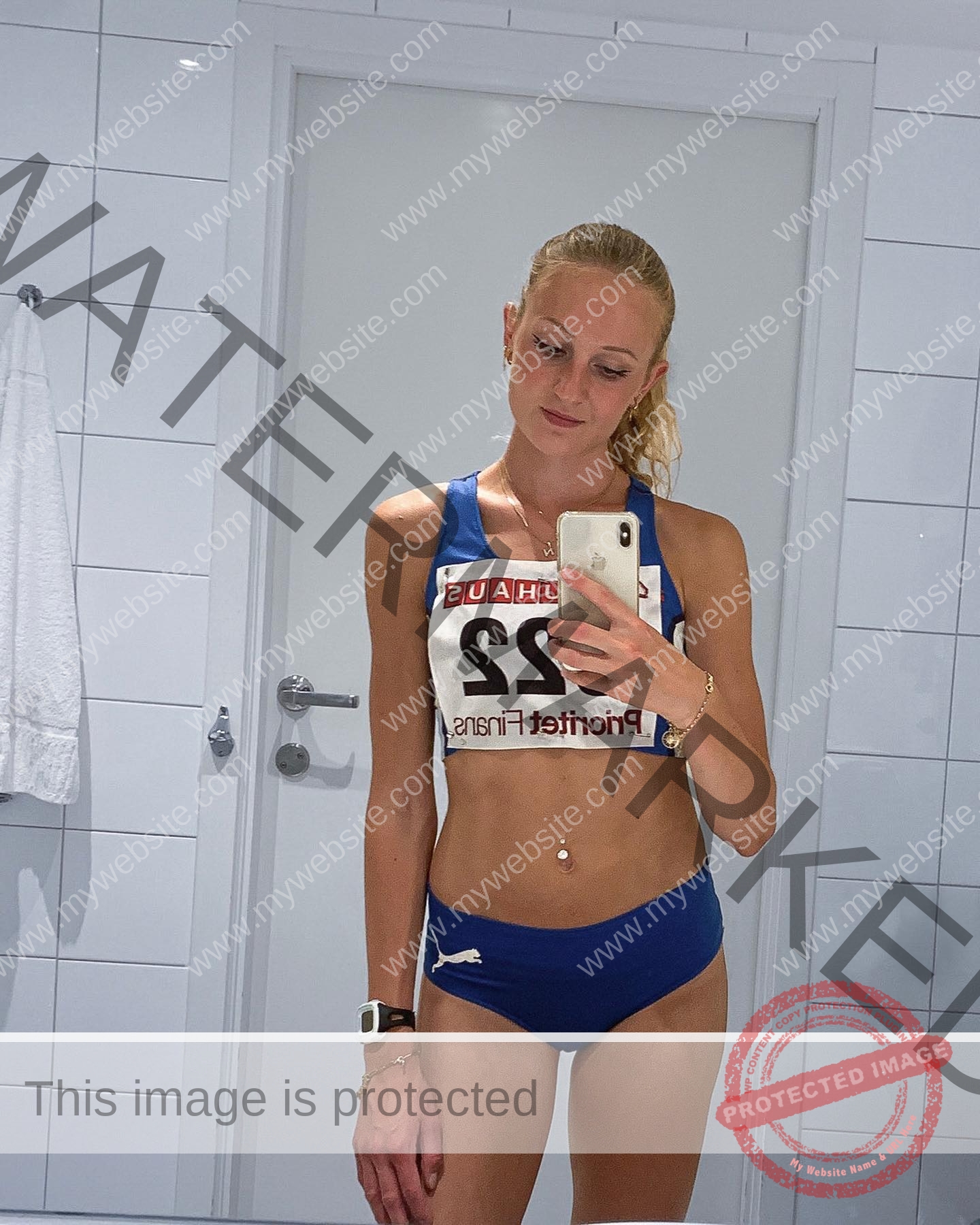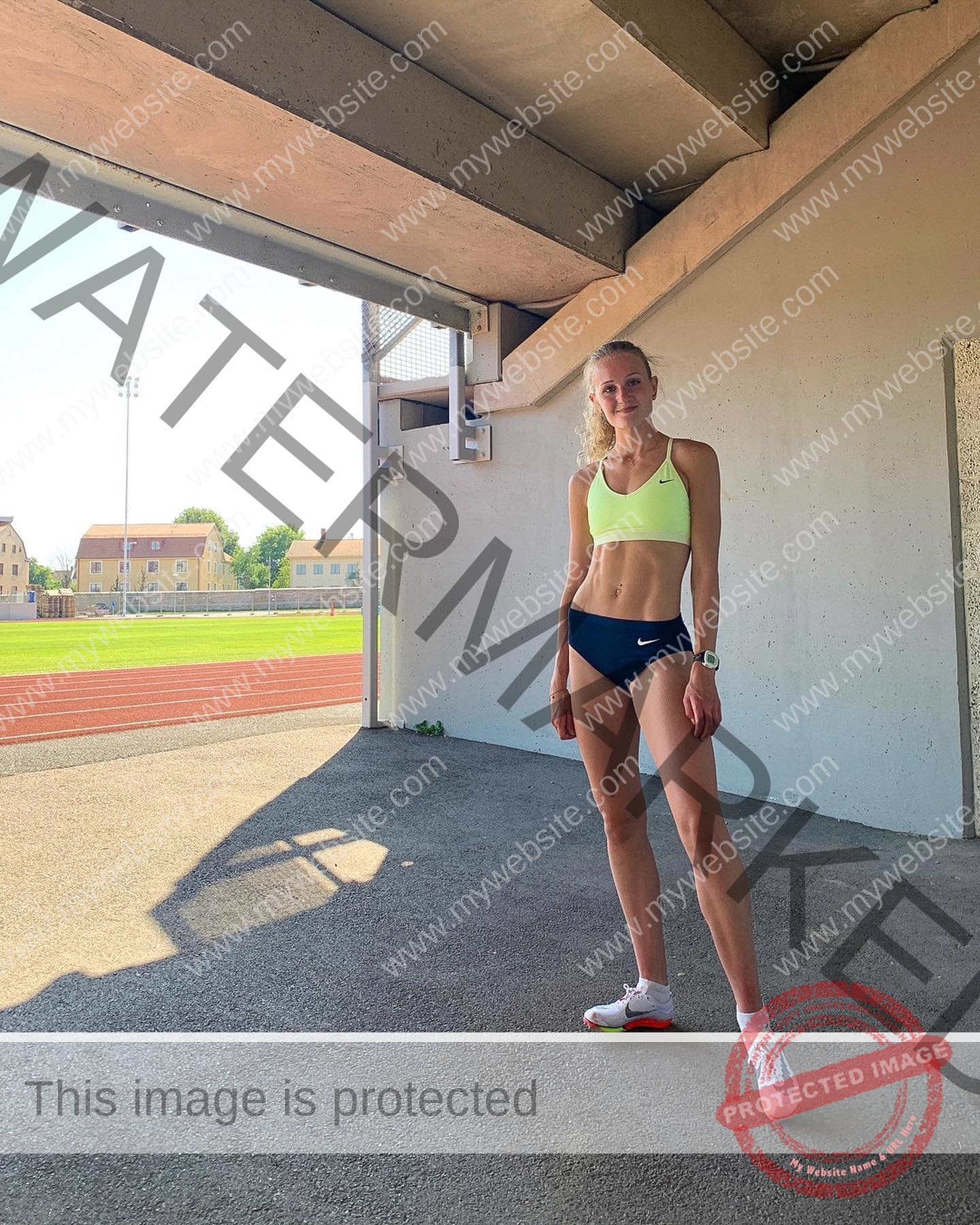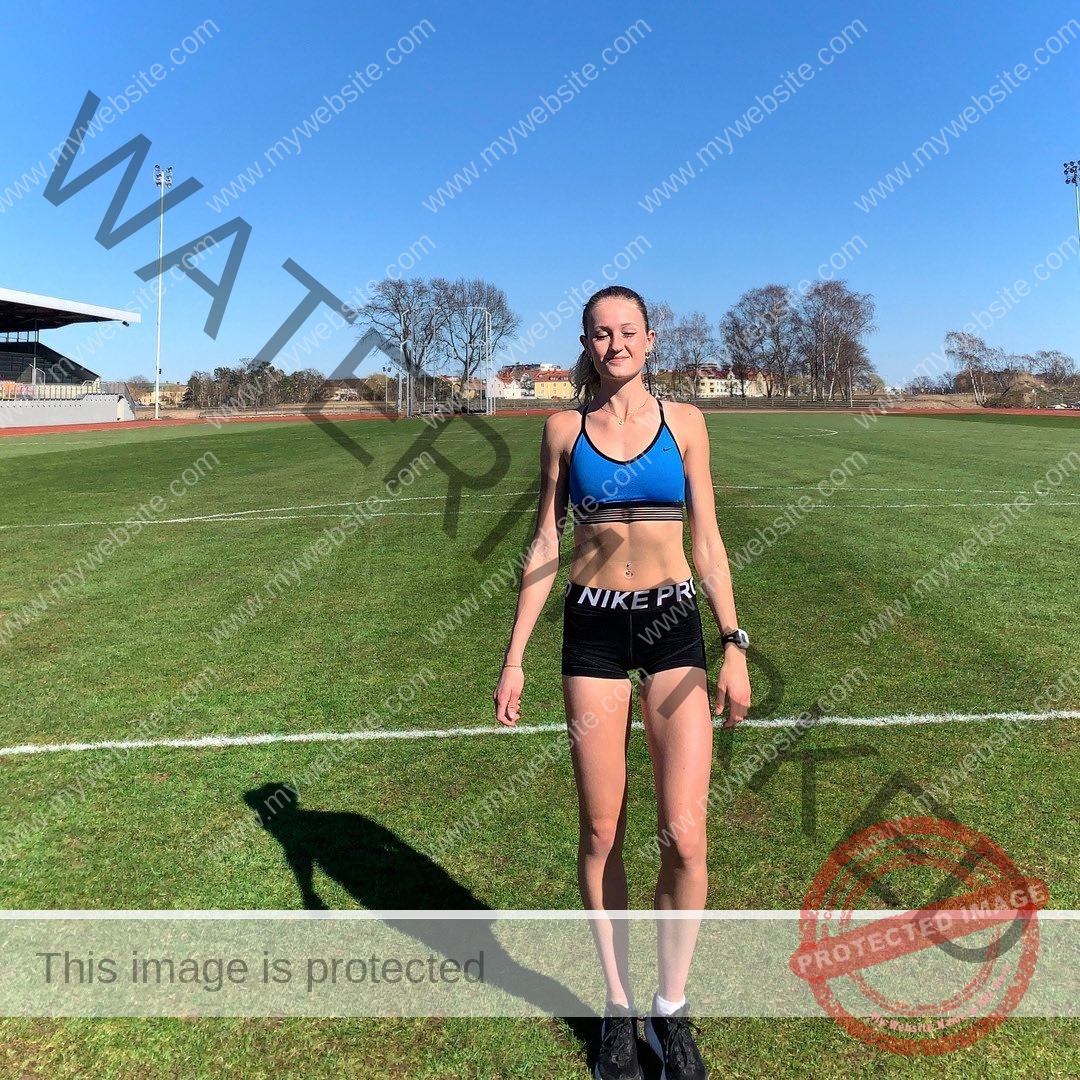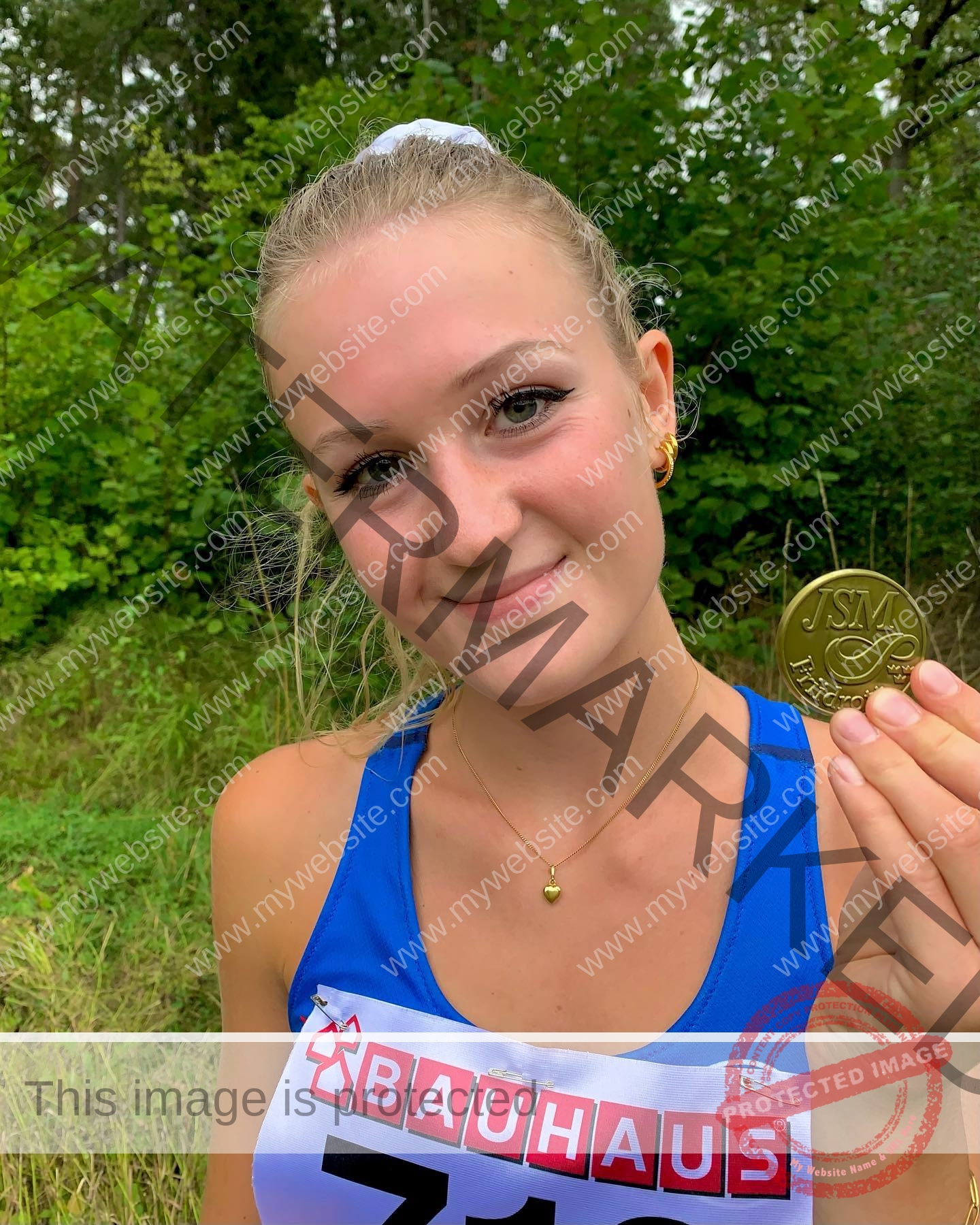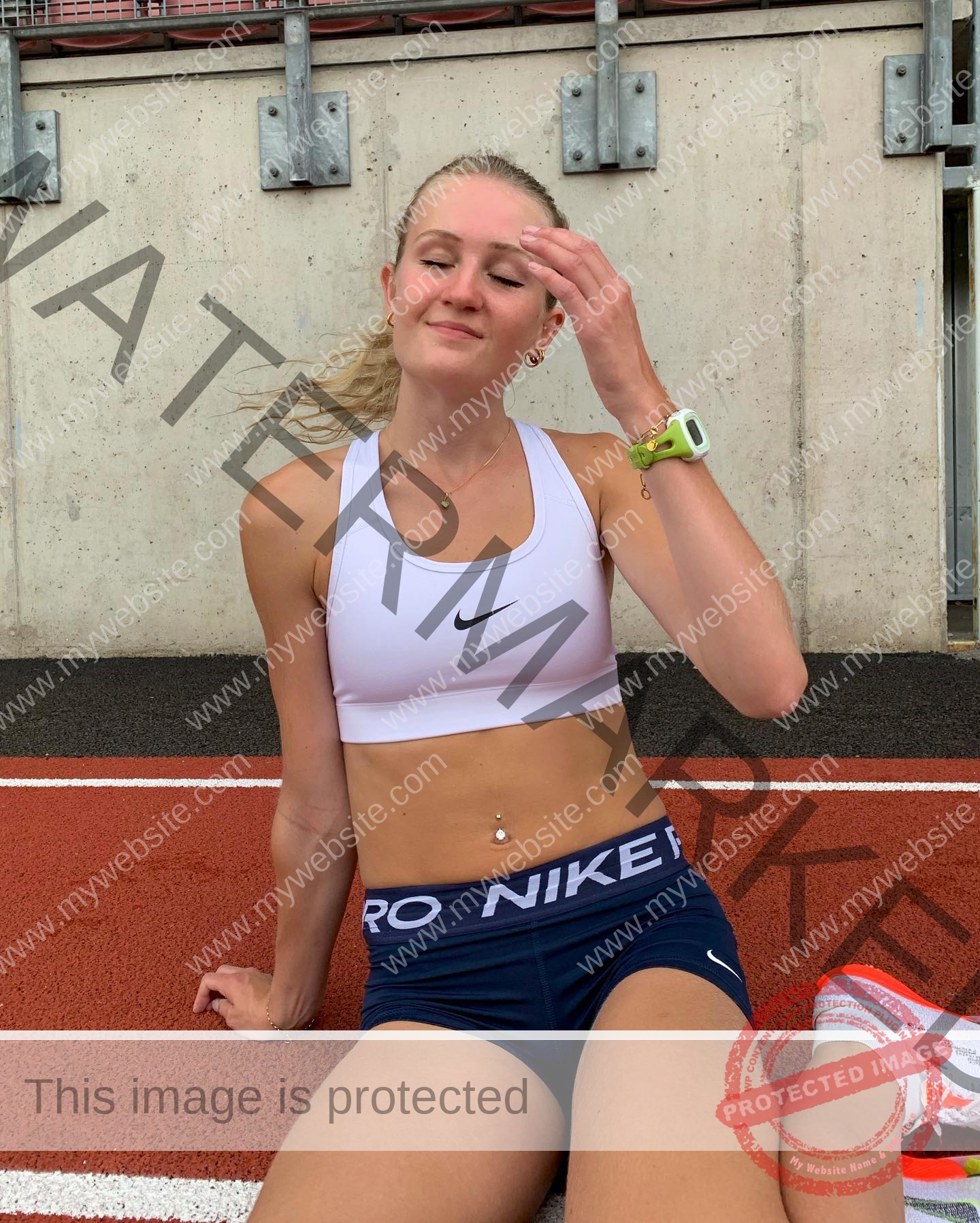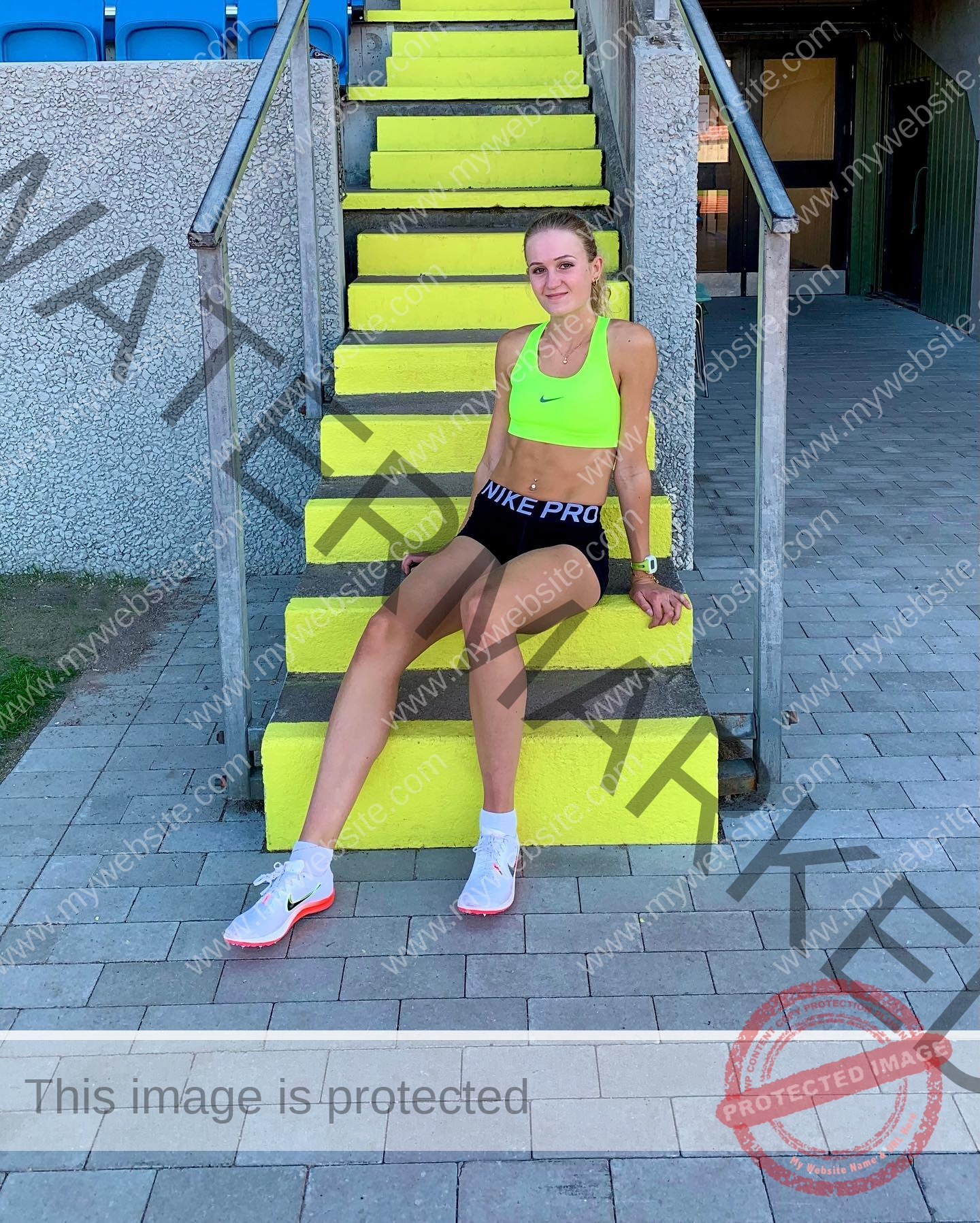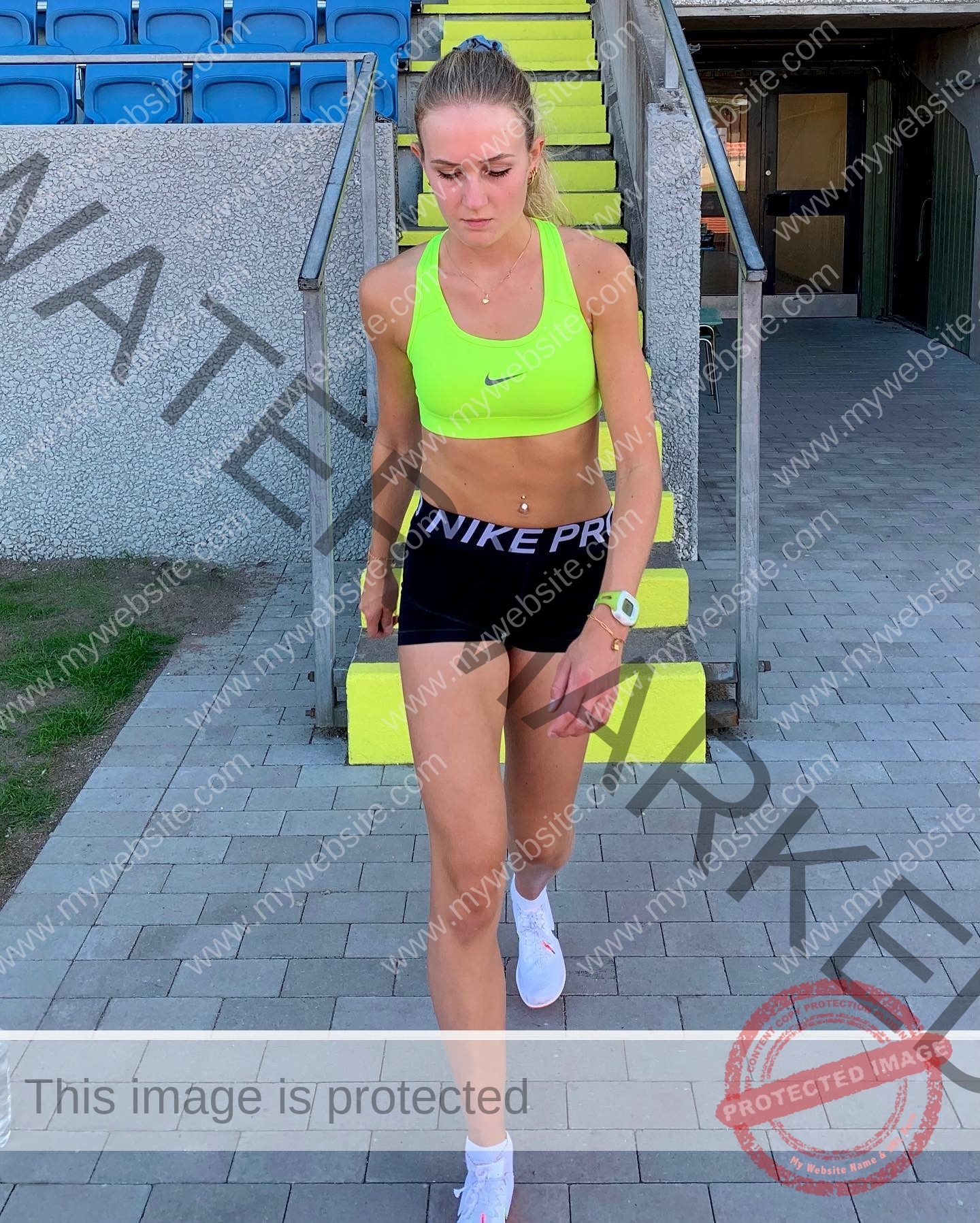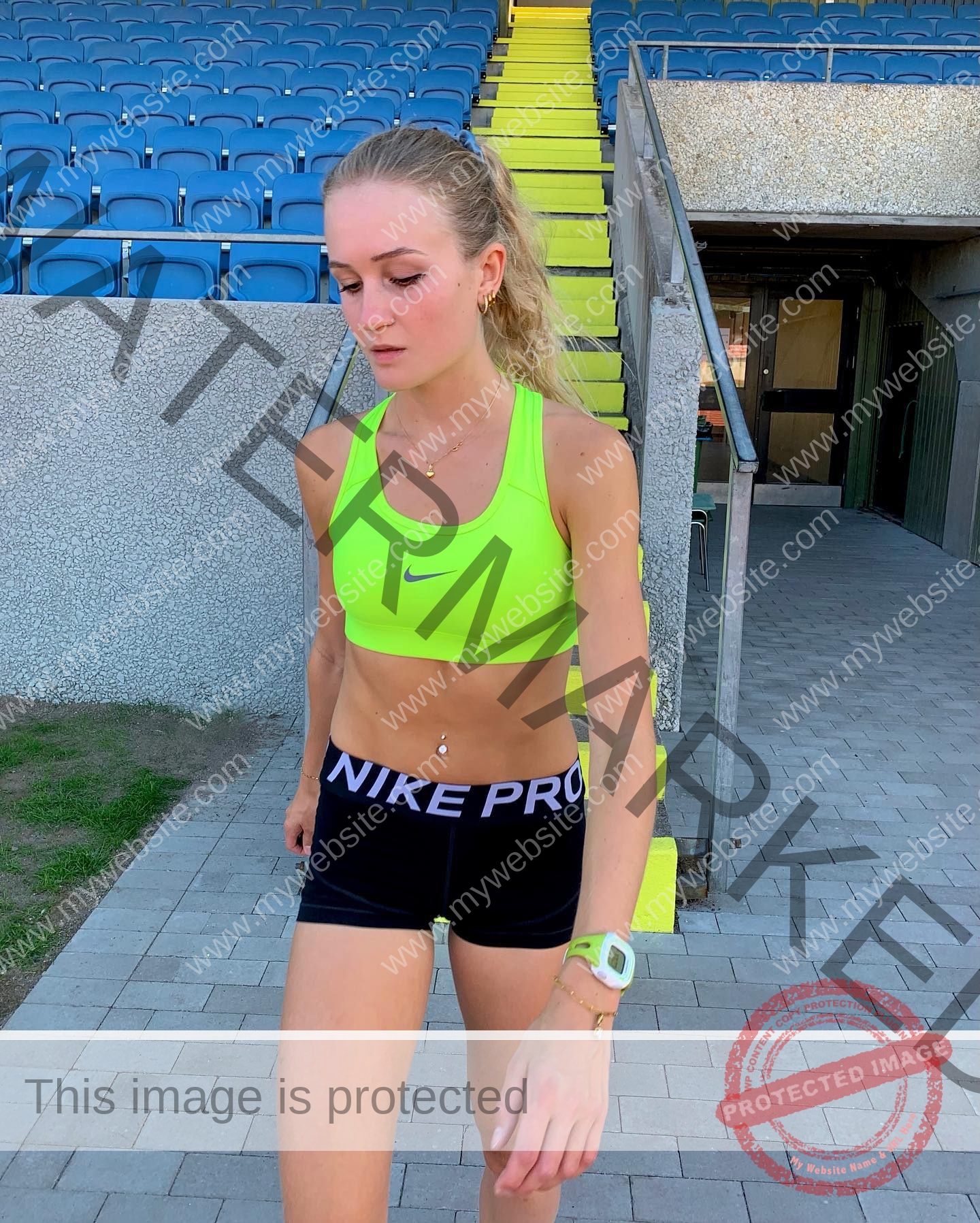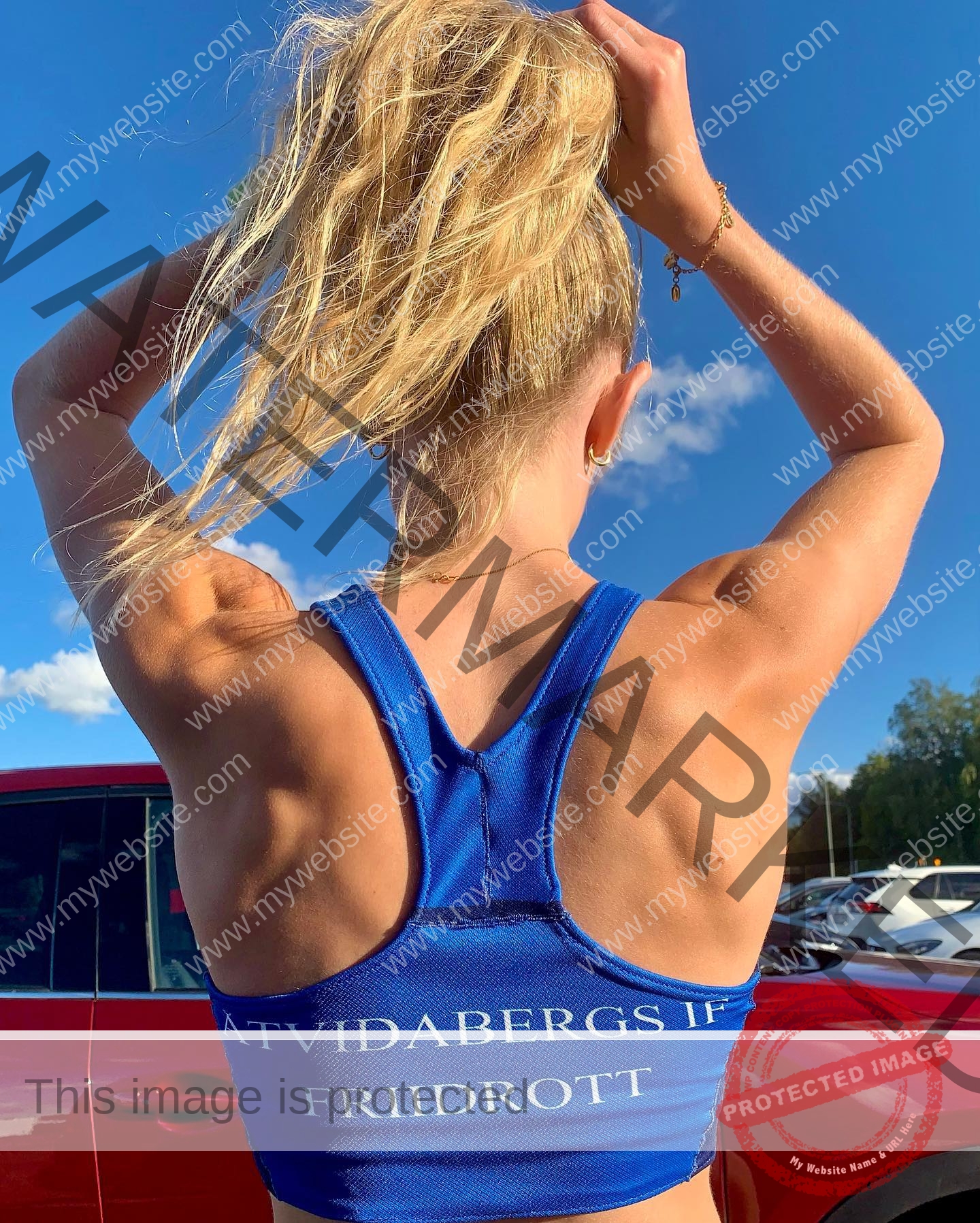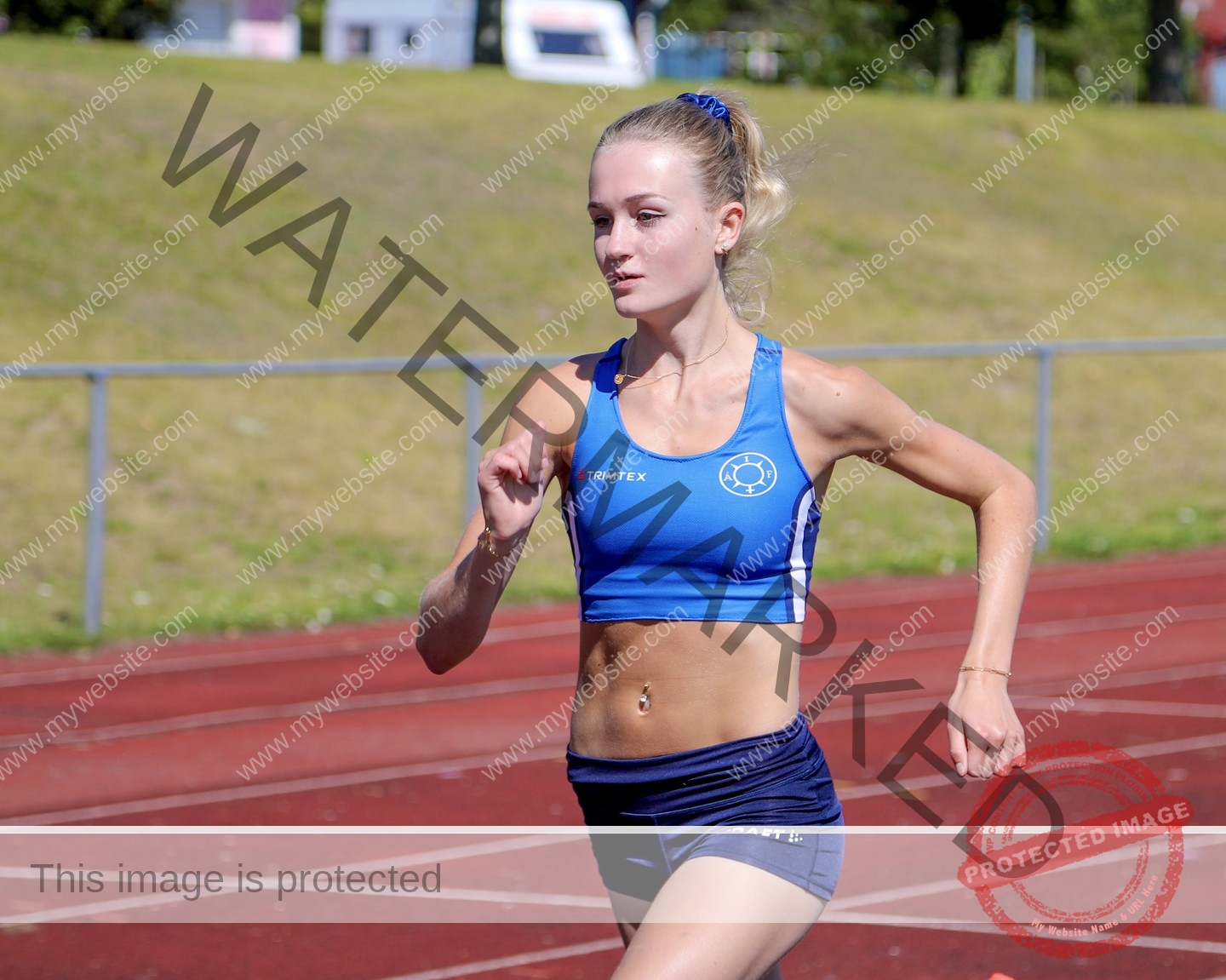Nadja Rugland: Sweden’s Middle-Distance Record Breaker
Nadja Rugland has established herself as one of Sweden’s most accomplished middle-distance runners, representing Åtvidabergs IF while breaking regional records and competing at the highest levels of Swedish athletics. At 23 years old, Rugland combines her athletic pursuits with academic studies, embodying the dedication required to excel in both arenas.
Athletic Accomplishments
Record-Breaking 800-Meter Specialist
Rugland’s signature event is the 800 meters, where she has achieved remarkable success both nationally and regionally. Her outdoor personal best of 2:06.92 seconds, set on May 31, 2023, at Slottsskogsvallen in Göteborg, stands as a testament to her elite middle-distance capabilities. This performance places her among Sweden’s top competitors in the event.
In indoor competition, Rugland has recorded a personal best of 2:07.07 seconds in the 800-meter short track, achieved on February 2, 2023. Her ability to perform at near-identical levels both indoors and outdoors demonstrates exceptional consistency and versatility—qualities that distinguish truly accomplished middle-distance runners.
Östergötland Regional Record
One of Rugland’s most significant achievements came when she shattered the Östergötland regional record for the 800 meters, a mark that had stood for over four decades. At the “Bannister Midsummer Games” in Göteborg in late June 2022, Rugland clocked 2:08.09, breaking Katharina Jönnå’s record of 2:08.58 that had been set in 1979 while running for Linköpings GIF.
Breaking the sub-2:10 barrier held special significance for Rugland, as she explained that this threshold represents “a magical boundary for quite many” runners. Her performance didn’t just edge past the old record—she demolished it by nearly two seconds, making a definitive statement about the new standard for middle-distance running in the region.
Youth World Championships Victory
In June 2022, Rugland captured victory in the women’s 800 meters at the World Youth Games (Världsungdomsspelen) in Göteborg, crossing the finish line in 2:11.59. This achievement at an international youth competition demonstrated her ability to perform under pressure on significant stages and marked her as a rising talent in Swedish athletics.
1500-Meter Versatility
Beyond the 800 meters, Rugland has proven herself capable over longer distances. Her personal best in the 1500 meters stands at 4:41.57 seconds, achieved on August 27, 2022, in Sollentuna. In indoor competition, she has recorded 4:41.89 in the 1500-meter short track, set on January 25, 2020, at IK Pallas in Malmö.
This versatility across middle-distance events—from 800 to 1500 meters—showcases Rugland’s comprehensive aerobic development and racing intelligence. The ability to excel at both distances requires a careful balance of speed, endurance, and tactical awareness.
Competitive Success in Grand Prix Series
Rugland has competed successfully in Sweden’s premier domestic track series. She won the B-final in the Folksam Grand Prix in Göteborg, demonstrating her competitiveness against quality fields in Sweden’s top-tier competitions. These performances against strong domestic competition have been crucial to her development as an elite middle-distance runner.
Swedish National Championships
Rugland regularly competes at the Swedish National Championships (Friidrotts-SM), where she has targeted final placements and the opportunity to race against Sweden’s best, including her role model Lovisa Lindh, who holds the Swedish record in the 800 meters at 1:58.77.
Education and Academic Pursuits
Chemistry Studies
Rugland is pursuing a degree in Chemistry at Karlstad University, studying through distance education while managing her athletic training schedule. This academic path demonstrates her intellectual curiosity and commitment to building a foundation for life beyond competitive athletics.
Balancing the demands of chemistry coursework—which requires rigorous study, laboratory work understanding, and analytical thinking—with elite-level athletic training showcases exceptional time management and dedication. The discipline required to succeed in both arenas speaks to Rugland’s character and work ethic.
Distance Learning Flexibility
By studying remotely, Rugland has created a flexible arrangement that allows her to train seriously while pursuing her academic goals. This approach represents a pragmatic solution many student-athletes employ to maximize their opportunities in both education and sport, though it requires significant self-motivation and organizational skills.
Personal Background and Roots
Kalmar Origins and Åtvidaberg Connection
Born and raised in Kalmar, located on Sweden’s southeast coast, Rugland nonetheless competes for Åtvidabergs IF, a club based in the Östergötland region. This seemingly unusual arrangement stems from deep family connections to Åtvidaberg, which Rugland describes as an idyll that has always been part of her life and running career.
The family spent several weeks each year in Åtvidaberg, making it feel like home despite not being her primary residence. When the time came to choose a competitive club, representing Åtvidaberg felt like a natural choice given these longstanding connections. The Edberga track in Åtvidaberg became the foundation for her middle-distance development, where she logged countless training miles through the years.
Athletic Family Background
While neither of Rugland’s parents competed in track and field, all of her siblings are runners. As the eldest, Nadja was the first in the family to begin competing, pioneering a path that her younger siblings would follow. Her younger sister Juni Rugland has also become an accomplished middle-distance runner, with personal bests of 2:15.71 in the 800 meters and 4:49.60 in the 1500 meters.
This family culture of running has created a supportive environment where athletic pursuits are understood and encouraged. The shared passion for the sport among siblings provides both motivation and understanding of the demands and rewards of competitive running.
Early Athletic Journey
Rugland began her track and field journey in an unconventional manner—she started competing before she had formal training. At age ten, she entered her first competitions despite the absence of a training group in her area. She began structured training at age eleven, and it quickly became apparent that her strength lay in middle-distance events.
“I started competing in track and field before I had trained. There was no training group. So I started competing when I was ten and training when I was eleven. It became clear quite quickly that I was best at running slightly longer distances,” Rugland explained.
For much of her early career, she relied more on natural talent than structured training, competing successfully without the intensive, systematic preparation that would come later. It’s only in recent years that she has trained more seriously and ambitiously, implementing structured training plans that have unlocked significant performance improvements.
Training Philosophy and Development
Talent to Structure
Rugland candidly acknowledges that her early success came primarily from natural ability rather than structured training. “Before, I ran more on my talent and the training wasn’t as planned,” she noted. The transition to more systematic, ambitious training in recent years has corresponded with her breakthrough performances and record-breaking achievements.
This progression from talent-based success to structured excellence is common among athletes who reach elite levels. The combination of natural ability and disciplined training creates the foundation for sustained high performance and continued improvement.
Training Environment
The Edberga track in Åtvidaberg has been central to Rugland’s development. This facility, where she has “run countless meters through the years,” provided the consistent training environment necessary for developing middle-distance excellence. The familiarity with this venue and the community support in Åtvidaberg have contributed to her sense of belonging with the club.
Her training also involves competition and preparation at various Swedish venues, including major facilities in Göteborg, Malmö, and Sollentuna. Exposure to different tracks and competitive environments has been essential for developing the race experience and adaptability required at the national level.
Role Models and Inspiration
Lovisa Lindh, Sweden’s 800-meter record holder, has served as Rugland’s primary role model throughout her competitive career. “Lovisa Lindh has always been good for as long as I’ve been running. So she has always been a role model,” Rugland shared.
When she first began running the 800 meters, Rugland was approximately thirty seconds slower than Lindh. Through years of consistent training and improvement, she has closed that gap to roughly ten seconds—a dramatic improvement that demonstrates both her development and the realistic nature of her long-term goals.
“It feels fun that I’m getting closer to being as good as her,” Rugland noted, expressing satisfaction with her progression toward Swedish elite standards while maintaining perspective about the work still required to reach that level.
Career Aspirations and Goals
Pursuing Swedish Elite Status
Rugland’s primary athletic goal involves continuing to close the gap with Sweden’s elite 800-meter runners. Breaking into the 2:05 range would represent another significant milestone, bringing her within striking distance of national team consideration for major championships.
The sub-2:10 barrier, which she has already broken convincingly, represented an important psychological and practical milestone. Future targets likely include sub-2:05 and eventually challenging for times that would place her among Sweden’s all-time best in the event.
National Team Aspirations
While Rugland competes regularly at the Swedish national championships and against the country’s best middle-distance runners, representing Sweden at international championships remains an aspirational goal. Achieving the qualifying standards for European Championships or World Championships would require further significant time improvements, but her trajectory suggests this remains within reach.
Her competitive mindset—targeting final placements at national championships and measuring herself against the best Swedish runners—demonstrates the mentality necessary to continue progressing toward international-level performances.
Balancing Athletics and Education
As she pursues her chemistry degree while training at an elite level, Rugland exemplifies the modern student-athlete’s challenge of balancing competing demands. Her success in both arenas demonstrates that with proper planning and commitment, it’s possible to pursue excellence in multiple areas simultaneously.
The flexibility of distance learning allows her to structure her academic work around training demands while still progressing toward a degree that will provide career options beyond athletics. This pragmatic approach reflects mature thinking about life planning and future opportunities.
Competitive Characteristics
Breakthrough Mentality
Rugland’s comment about the Östergötland record—”It felt like it was time to break it”—reveals a confident, proactive mindset about challenging established standards. Rather than being intimidated by records that had stood for decades, she viewed them as targets to pursue and surpass.
This mentality, combined with her acknowledgment that recent years have involved more serious and ambitious training, suggests an athlete who understands that breakthrough performances require both mental commitment and physical preparation.
Consistency and Versatility
Her ability to perform at similar levels indoors and outdoors, across both 800 and 1500 meters, demonstrates the versatility that makes middle-distance runners valuable to teams and competitive across seasons. This consistency suggests solid fundamental training and the ability to adapt to varying race conditions and tactical situations.
Racing Intelligence
Middle-distance running requires sophisticated racing strategies—knowing when to lead, when to sit, how to position through various phases, and when to initiate finishing kicks. Rugland’s success at different competitive levels, from youth international competitions to Swedish national championships, indicates developing tactical sophistication to complement her physical abilities.
Impact on Swedish Middle-Distance Running
Regional Excellence
By breaking the Östergötland 800-meter record that had stood since 1979, Rugland has reset regional standards and inspired a new generation of middle-distance runners in the area. Her achievement demonstrates that with proper training and commitment, local athletes can reach heights that previous generations established.
Representing Åtvidabergs IF while competing at the national level brings visibility to a smaller club and region, showing that elite athletic development can occur outside major urban centers when athletes have dedication and support.
Family Legacy
As the eldest sibling who first began competing, followed by her younger siblings including Juni, Nadja has helped establish a family tradition in middle-distance running. This legacy within her own family parallels her broader impact on regional running by showing what’s possible through dedication to the sport.
Contribution to Swedish Women’s 800m
Swedish women’s middle-distance running has a proud tradition, with Lovisa Lindh’s national record standing as a significant benchmark. Rugland represents the next generation working to push Swedish standards higher, contributing to the depth of talent that makes Swedish athletics competitive internationally.
Future Outlook
At 23 years old, Rugland is approaching what are typically peak years for middle-distance runners. Many 800-meter specialists achieve their best performances between ages 24 and 28, suggesting she has significant room for continued improvement as she gains racing experience and physical maturity.
Her recent transition to more structured, ambitious training coinciding with personal bests and record-breaking performances suggests the formula for continued success is in place. The question becomes how much more improvement can be extracted from continued dedicated training, and whether she can make the jump to times that would earn international team selection.
Academic and Career Planning
Completing her chemistry degree will provide career options beyond athletics, whether in scientific research, education, industry, or related fields. This academic foundation ensures that regardless of how her athletic career unfolds, she will have credentials and knowledge to pursue meaningful professional opportunities.
The discipline and time management skills developed through balancing athletics and academics will serve her well in whatever career path she ultimately chooses, whether that involves chemistry directly or other pursuits.
Continuing Athletic Development
With her personal best of 2:06.92, Rugland has established herself as a legitimate national-level competitor in Sweden. The next thresholds—breaking 2:05, then approaching 2:00—would represent significant achievements and potentially open doors to international competition.
Her expressed goal of continuing to close the gap with Lovisa Lindh and other Swedish elite runners provides clear direction for her training and competition planning. Whether she ultimately reaches the absolute Swedish elite or continues excelling at the national level, her commitment to improvement and systematic training provides the foundation for a satisfying athletic career.
Conclusion
Nadja Rugland represents the modern Swedish middle-distance runner—academically accomplished, thoughtfully trained, and consistently competitive at the national level while aspiring to international standards. Her journey from a talented young runner competing before formal training to a record-breaking regional champion demonstrates the power of combining natural ability with structured preparation.
As she continues pursuing her chemistry degree while training seriously for athletics, Rugland embodies the balance that many elite student-athletes seek. Her breaking of records that stood for over forty years, her progression toward Swedish elite standards, and her role model’s approach to training and competition mark her as both an accomplished athlete and an inspiration to younger runners following similar paths.
Whether measured by the Östergötland record she shattered, the consistent improvement that has brought her within ten seconds of Sweden’s best, or the academic pursuits she maintains alongside athletics, Nadja Rugland’s story is one of dedication, progression, and the pursuit of excellence across multiple dimensions of life. As she continues developing through her mid-twenties, the Swedish middle-distance running community watches with interest to see how far this talented, hardworking athlete can progress.
Go Nadja!
